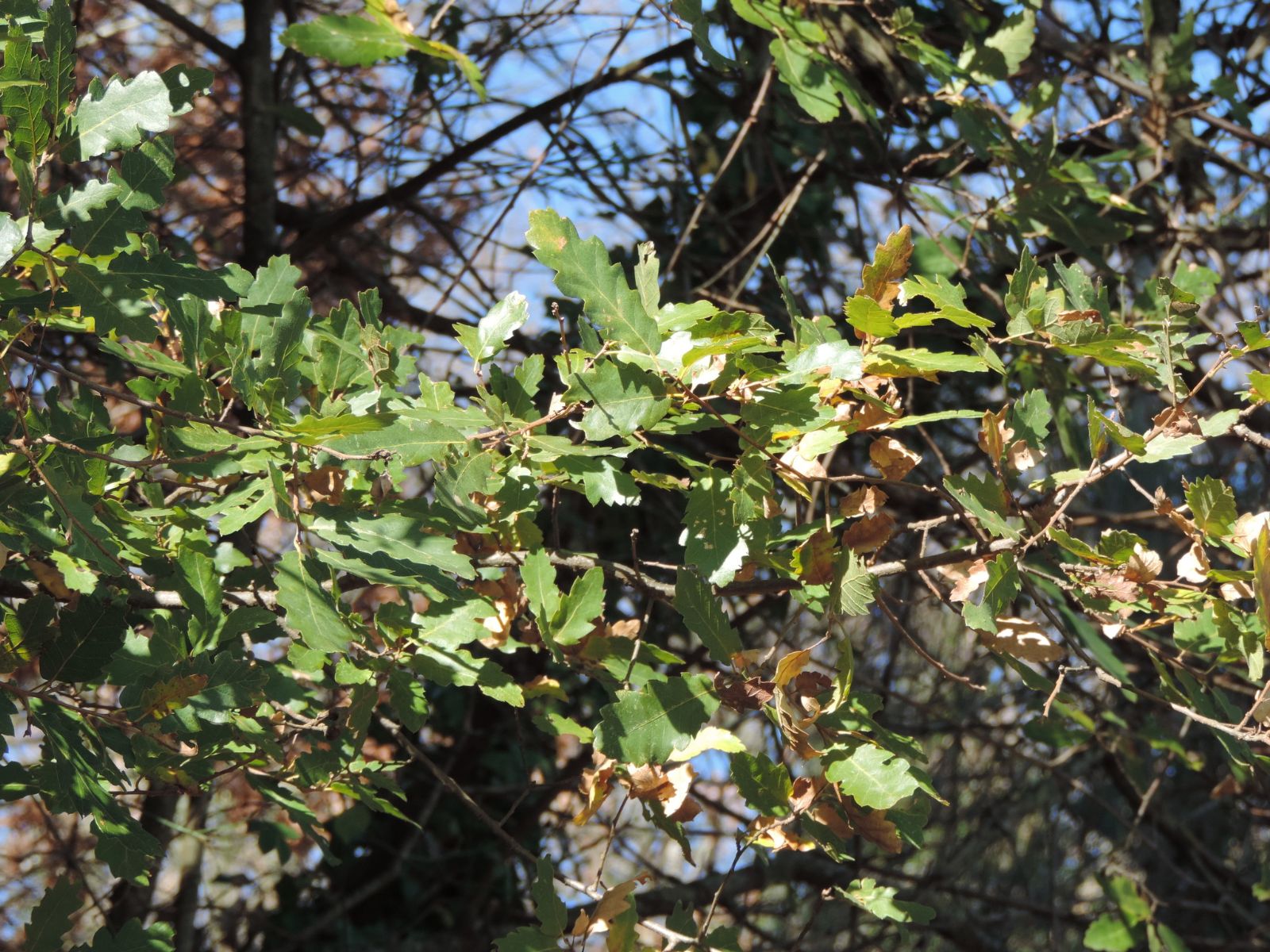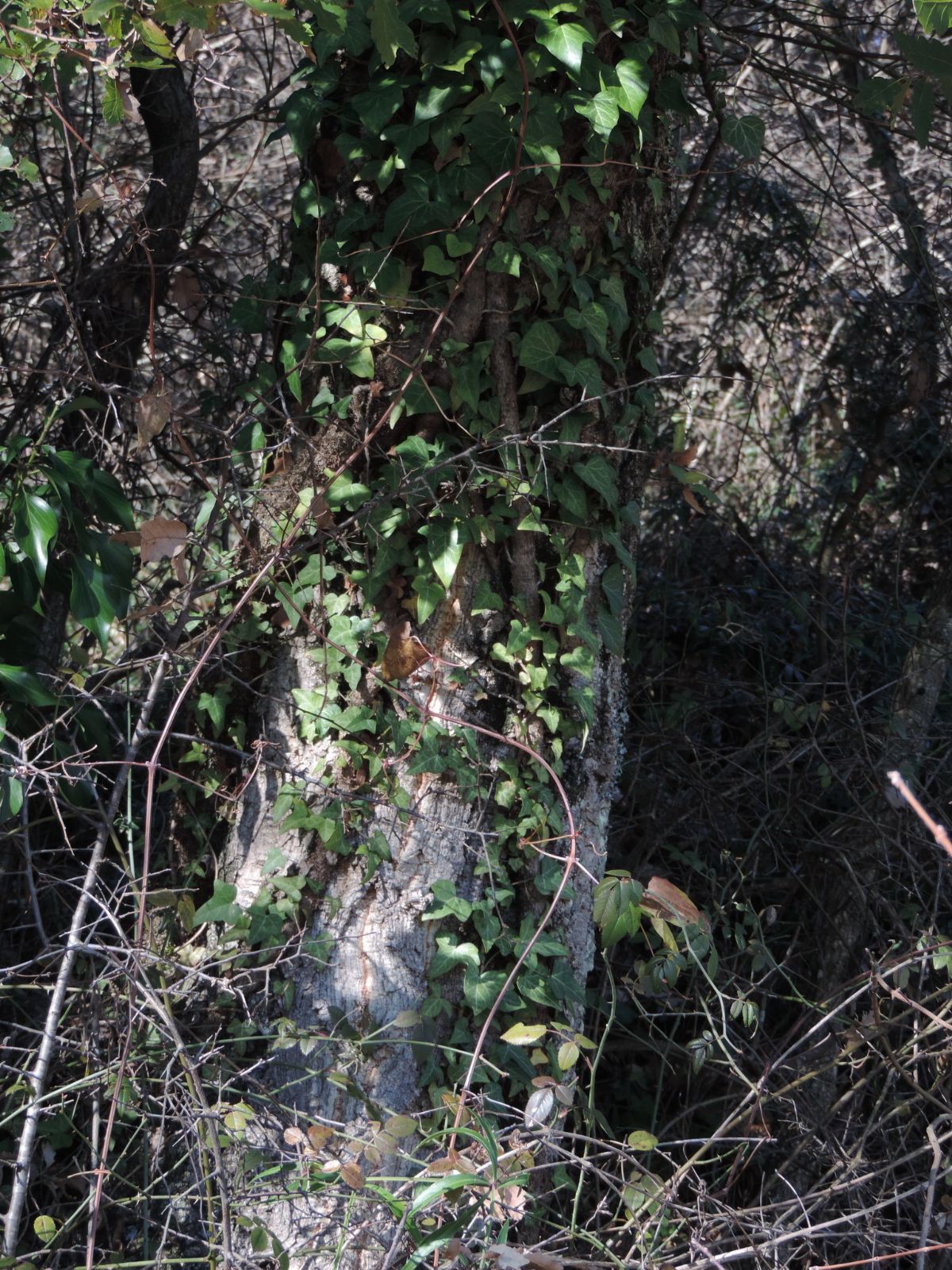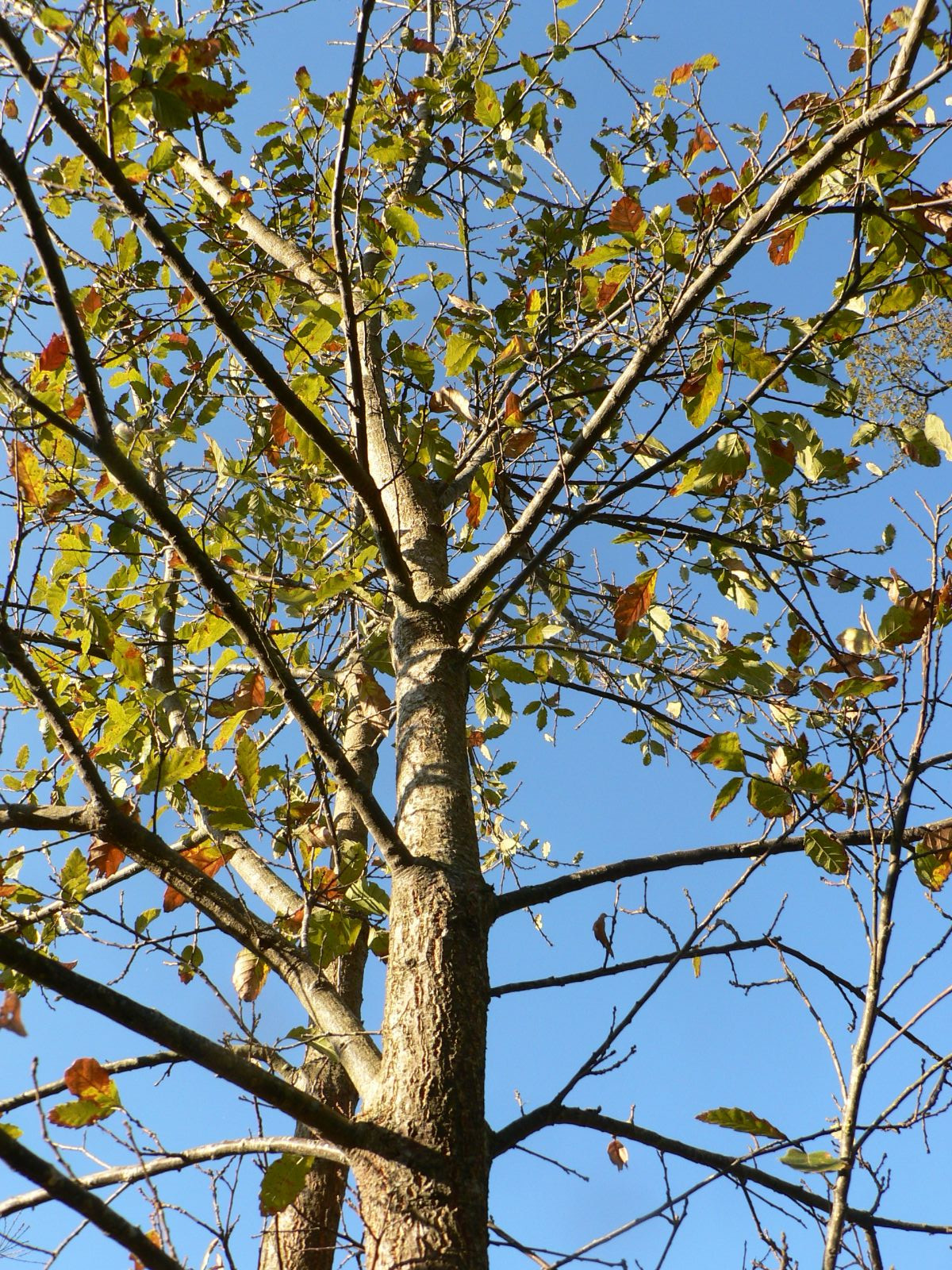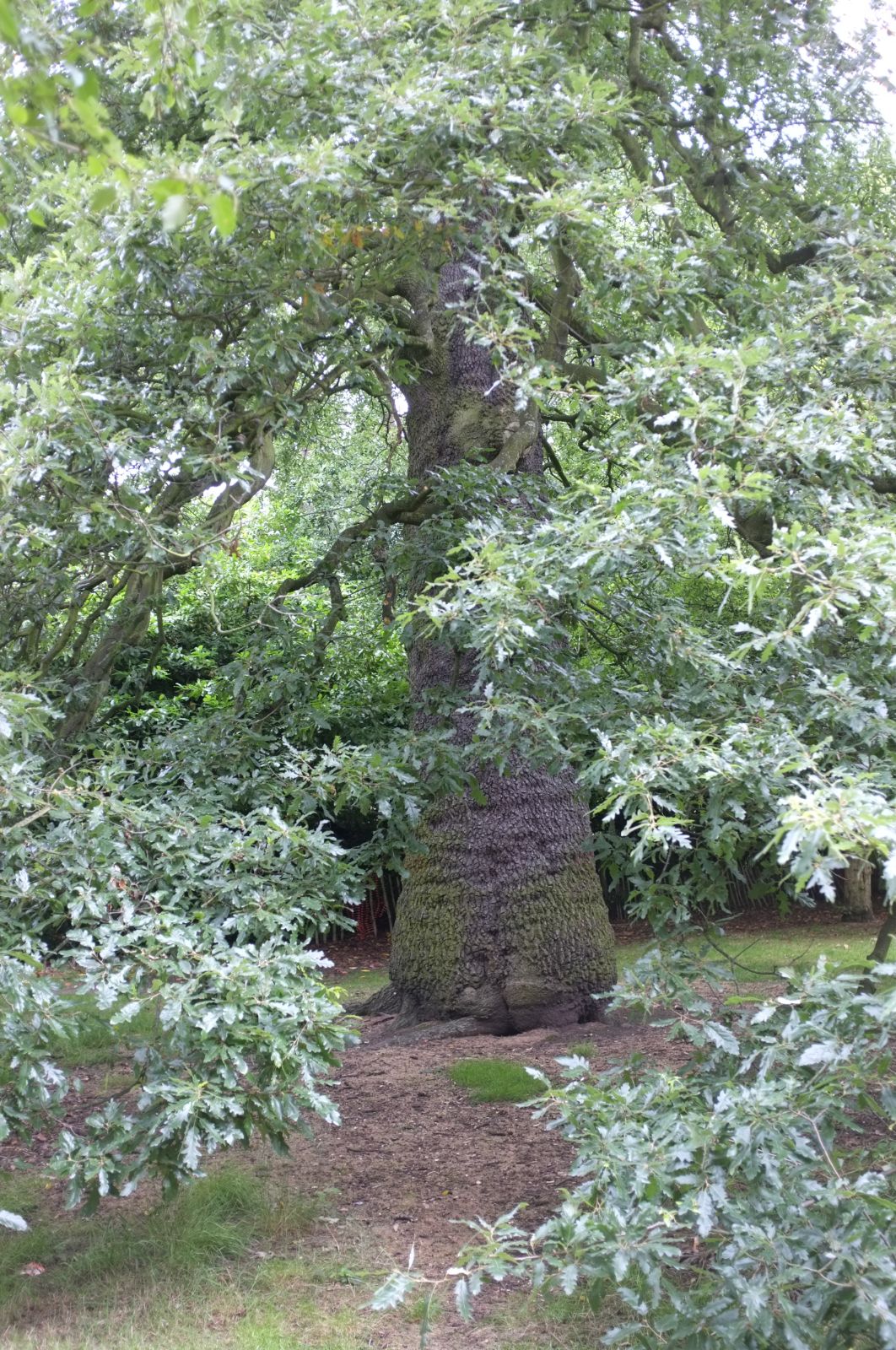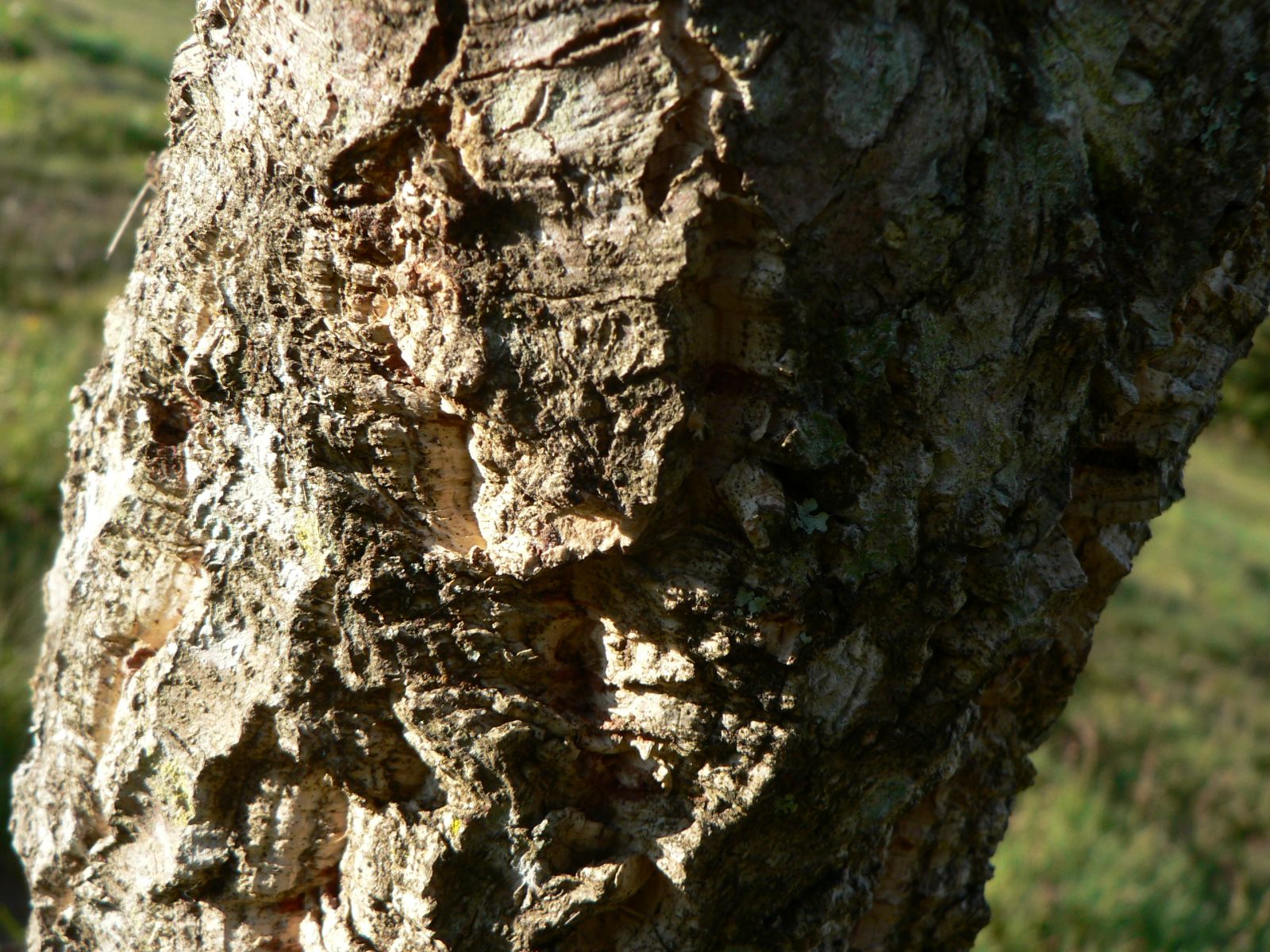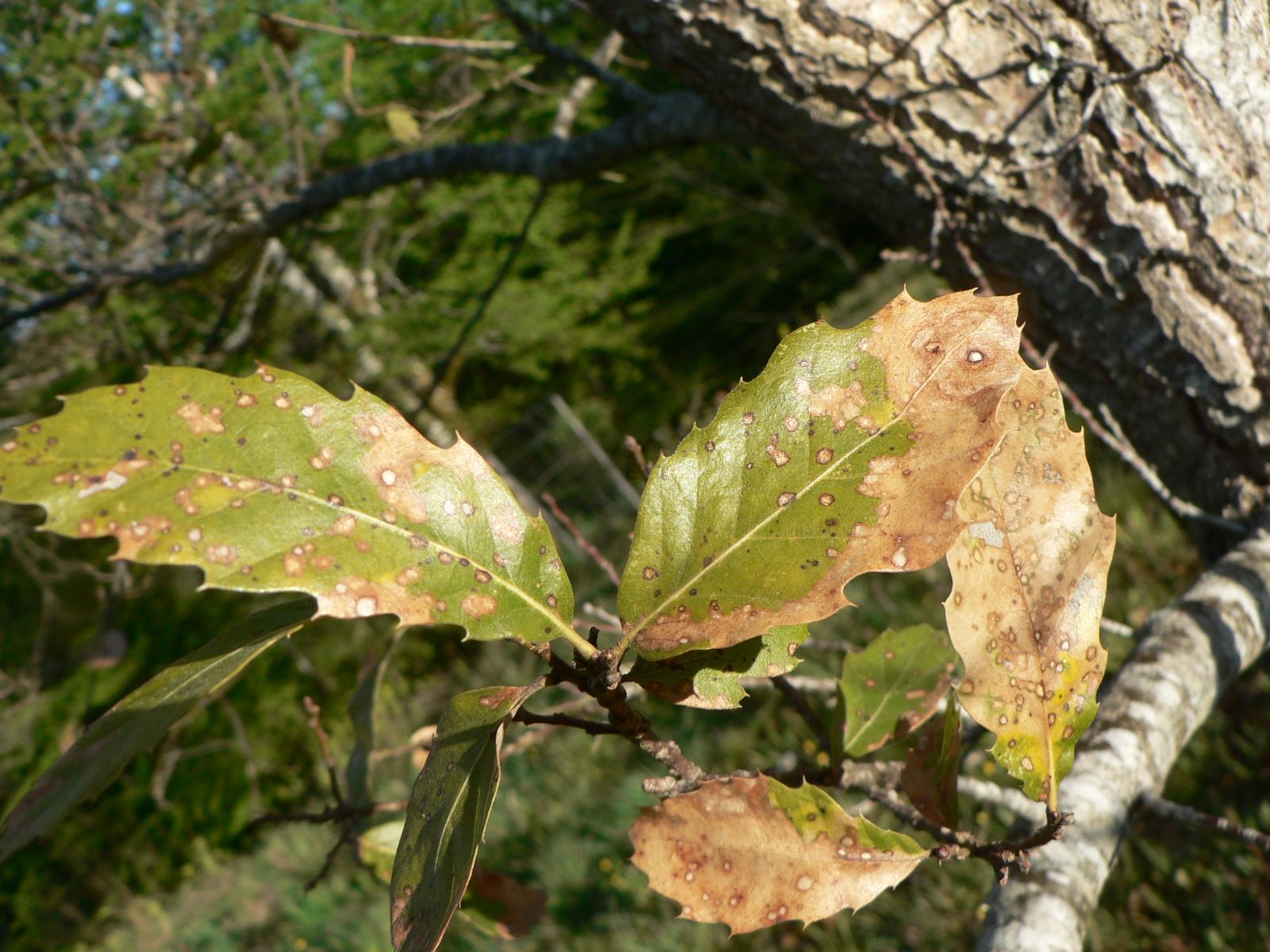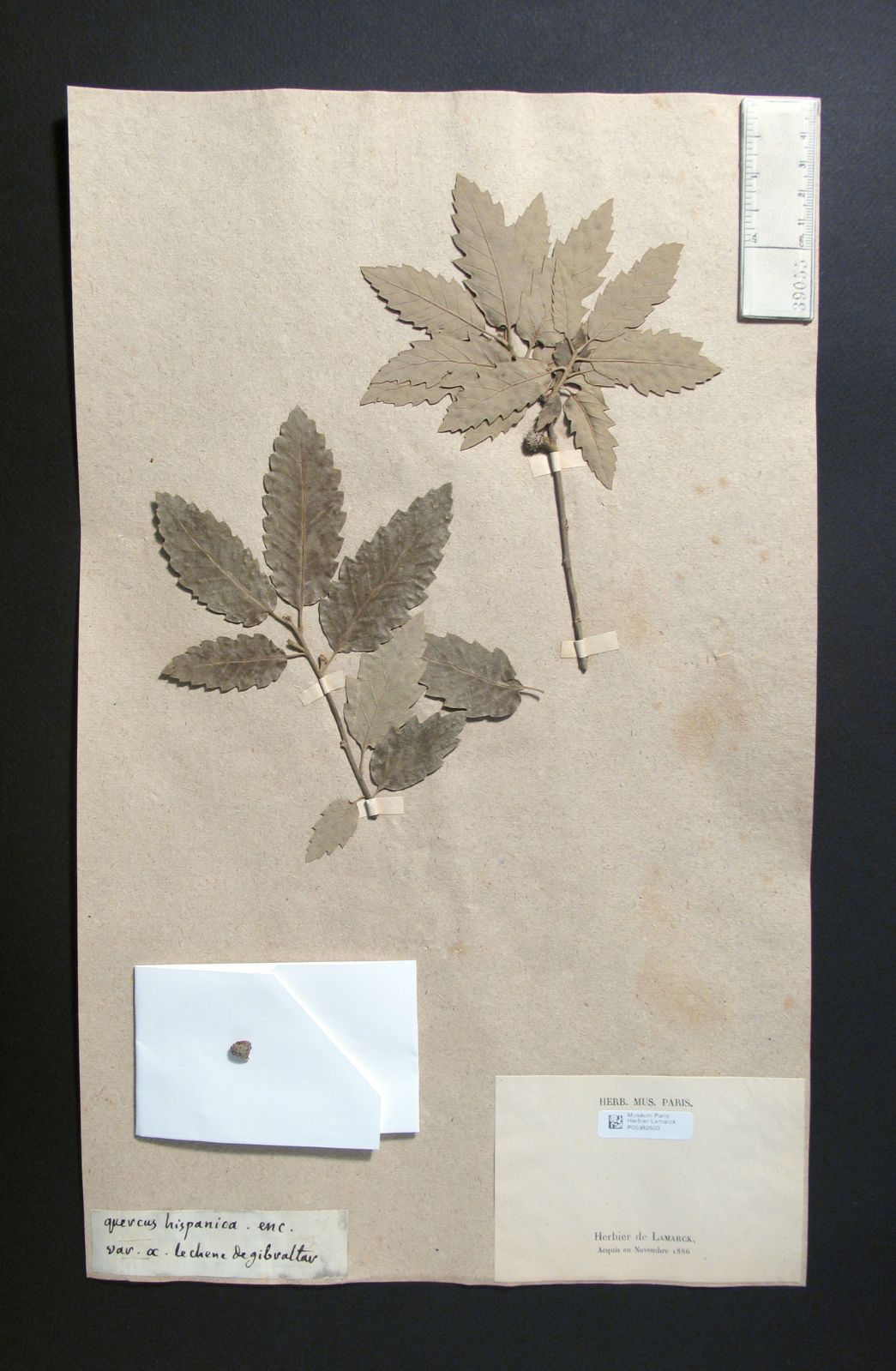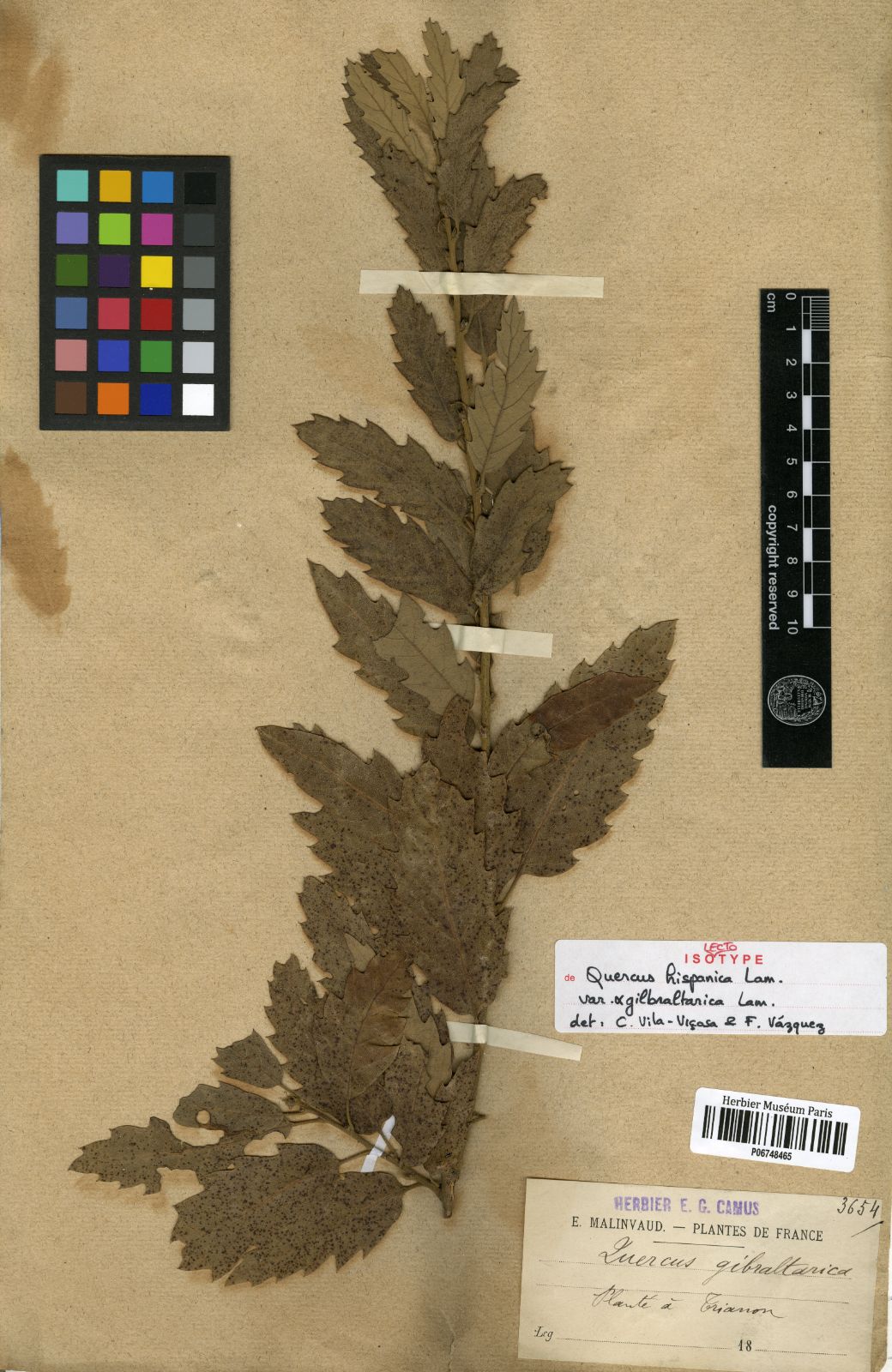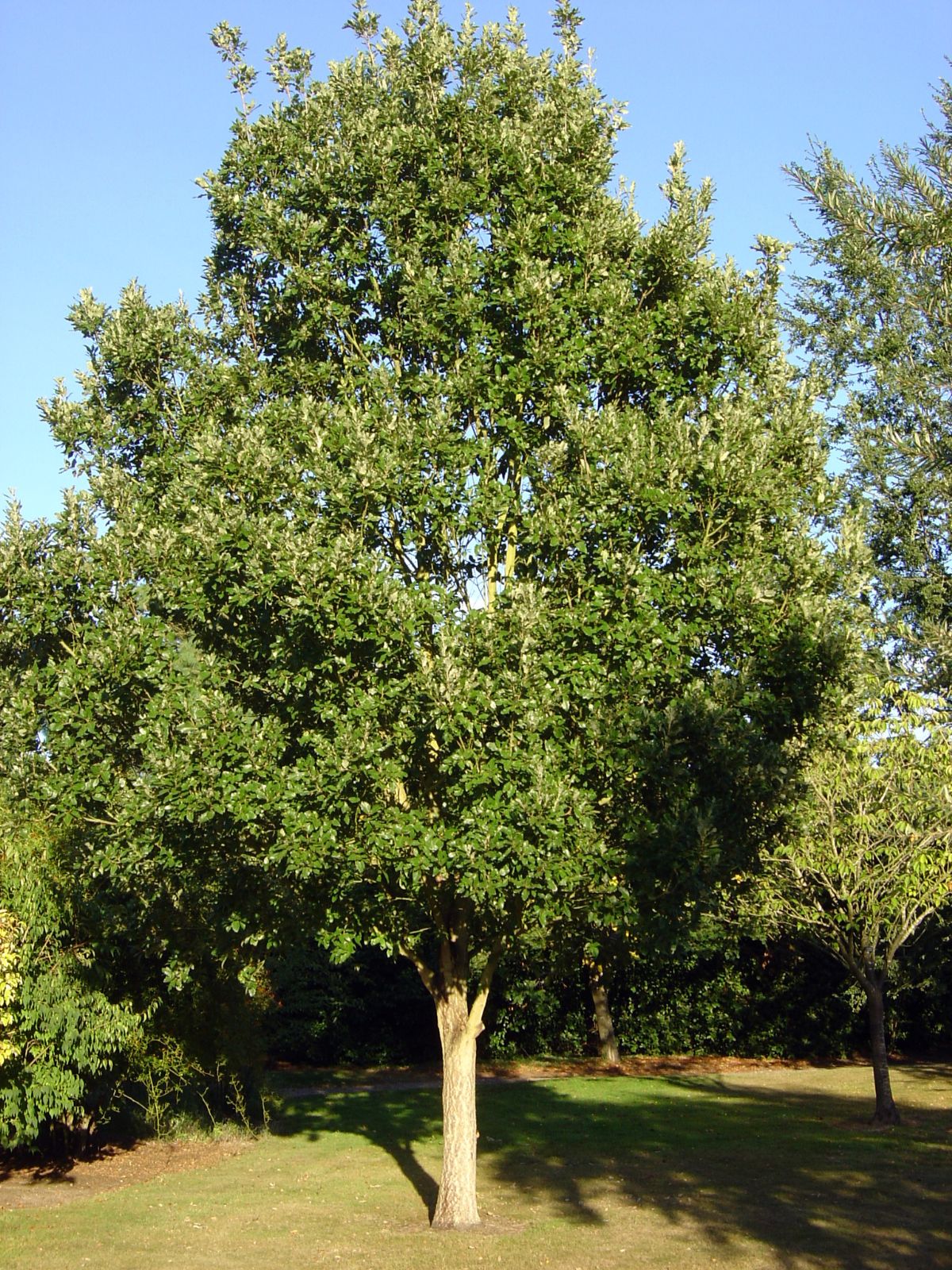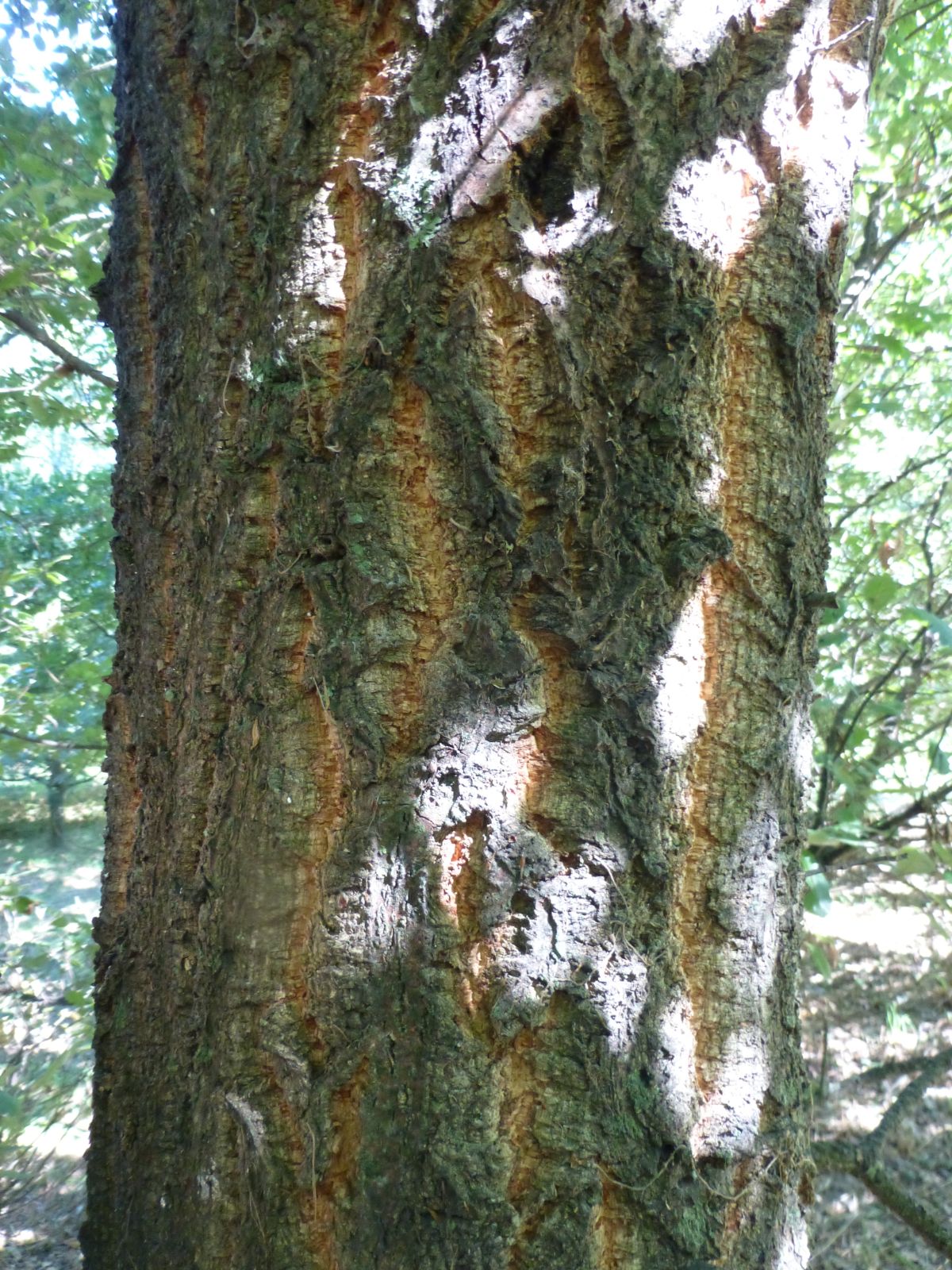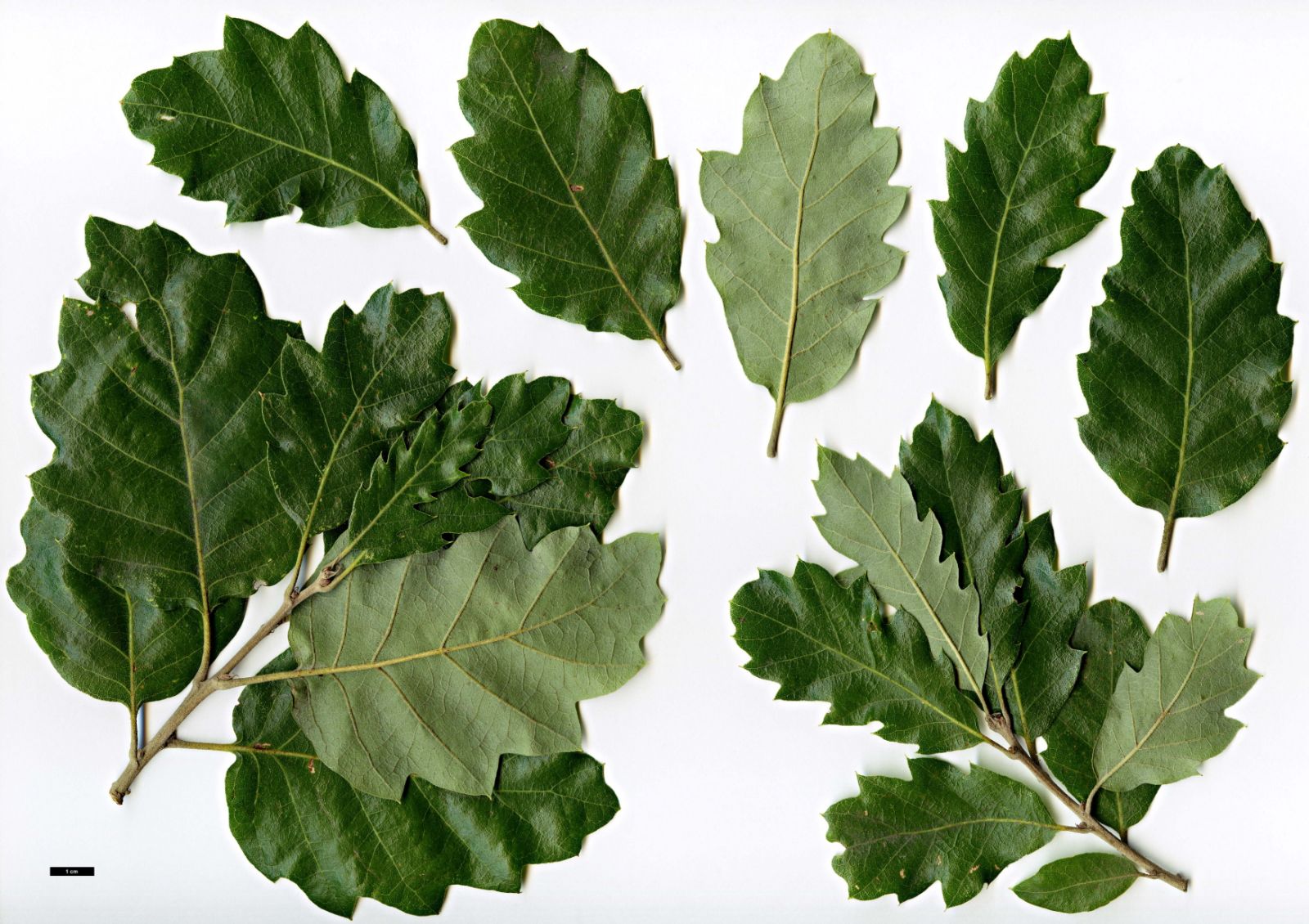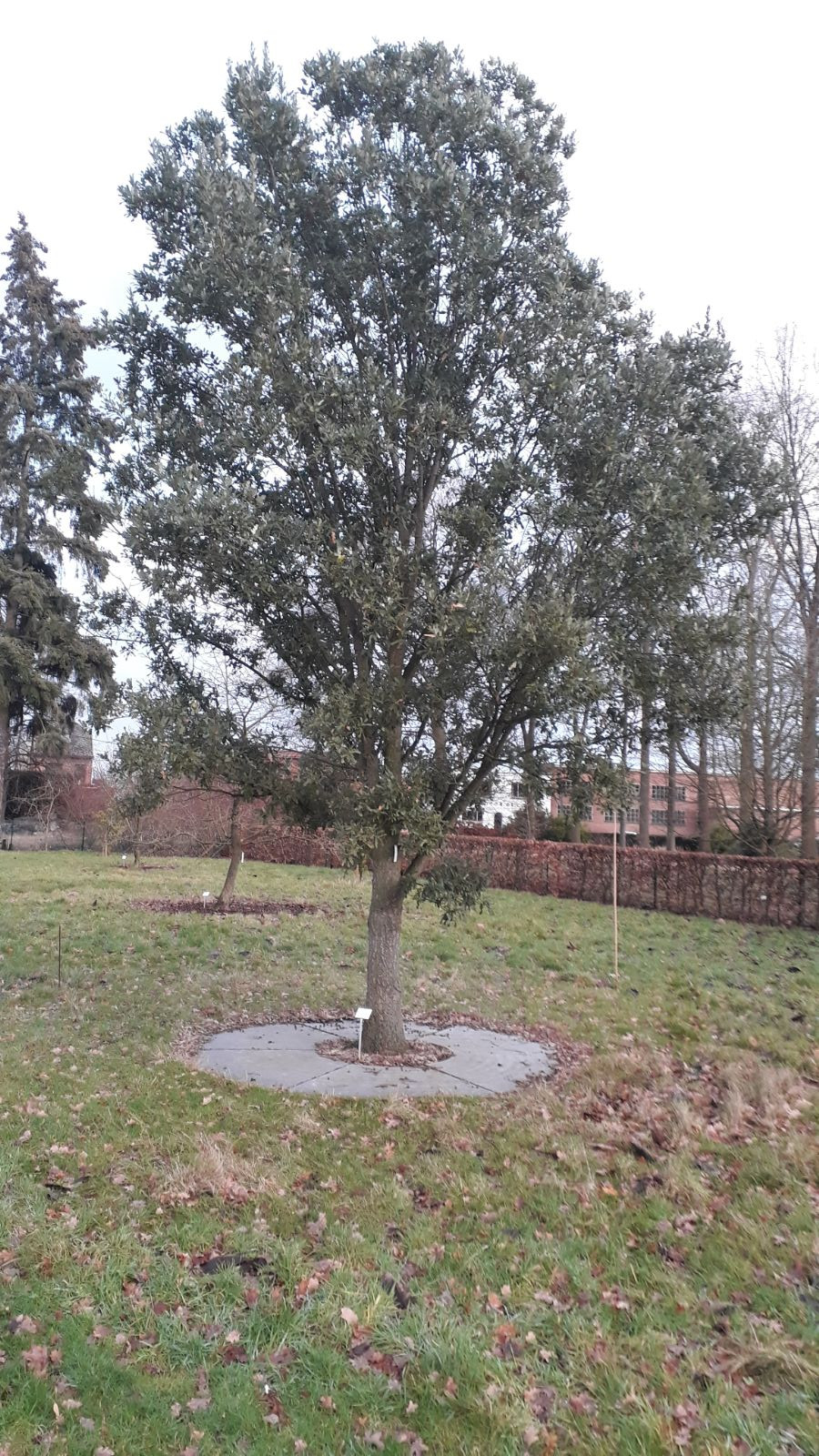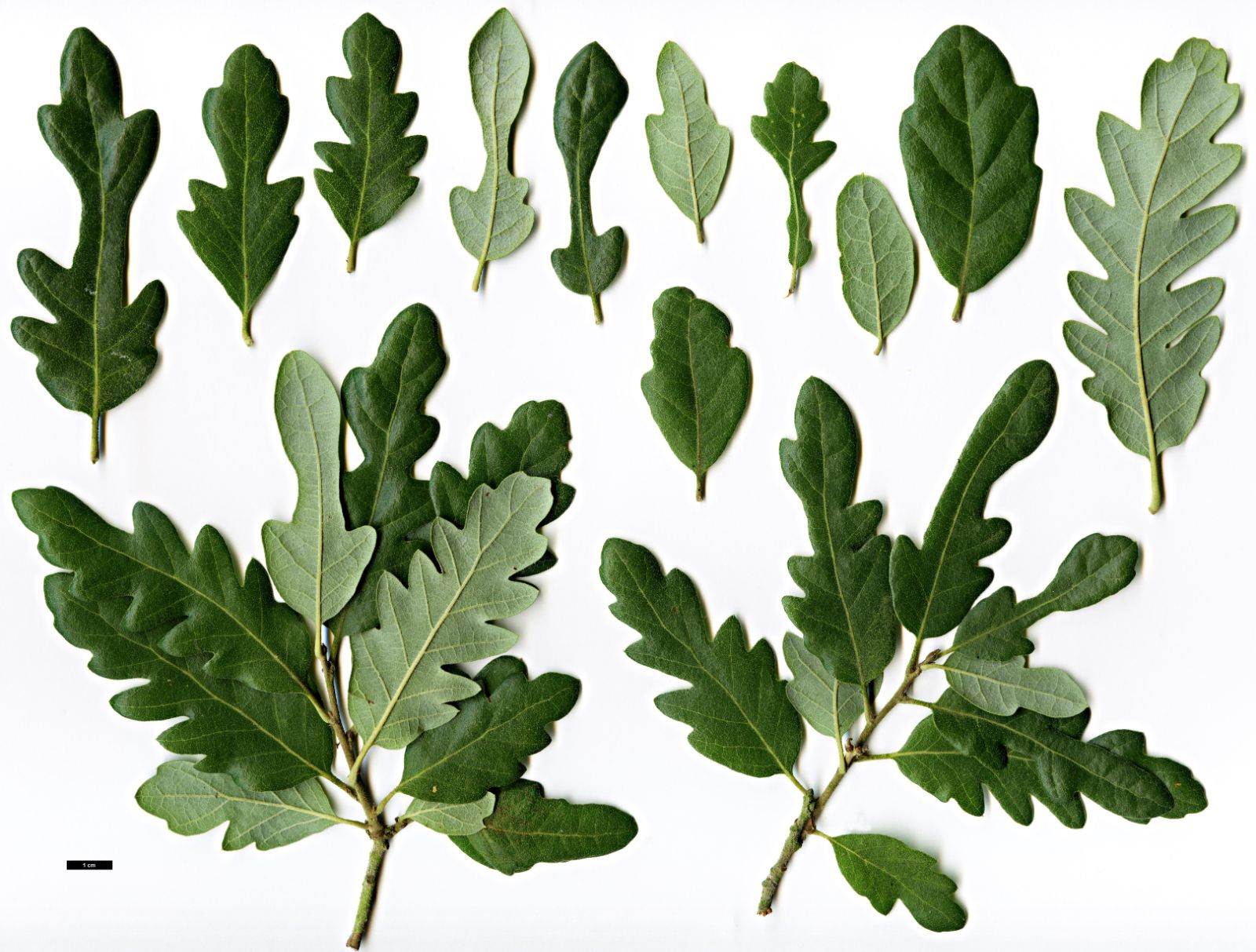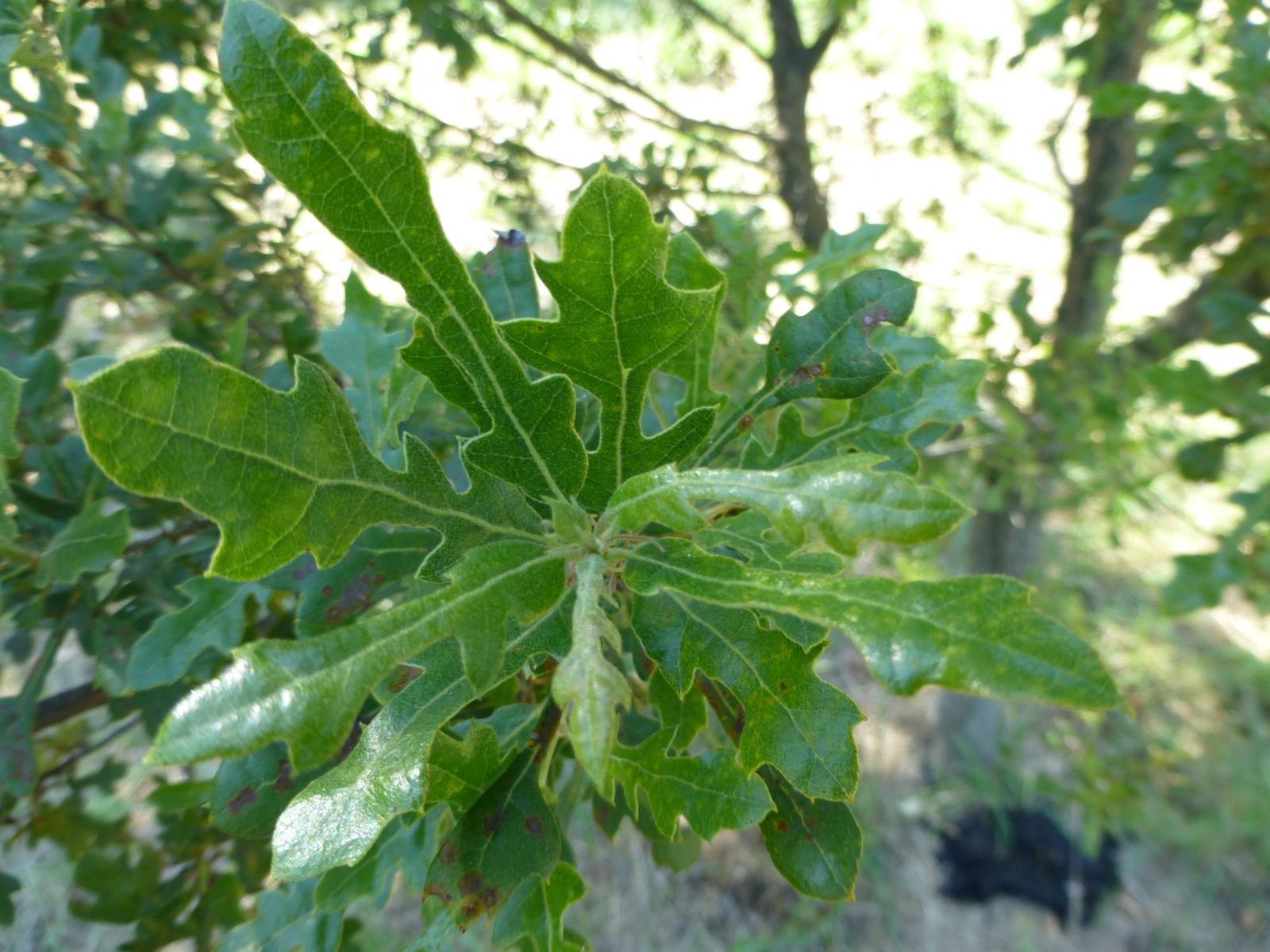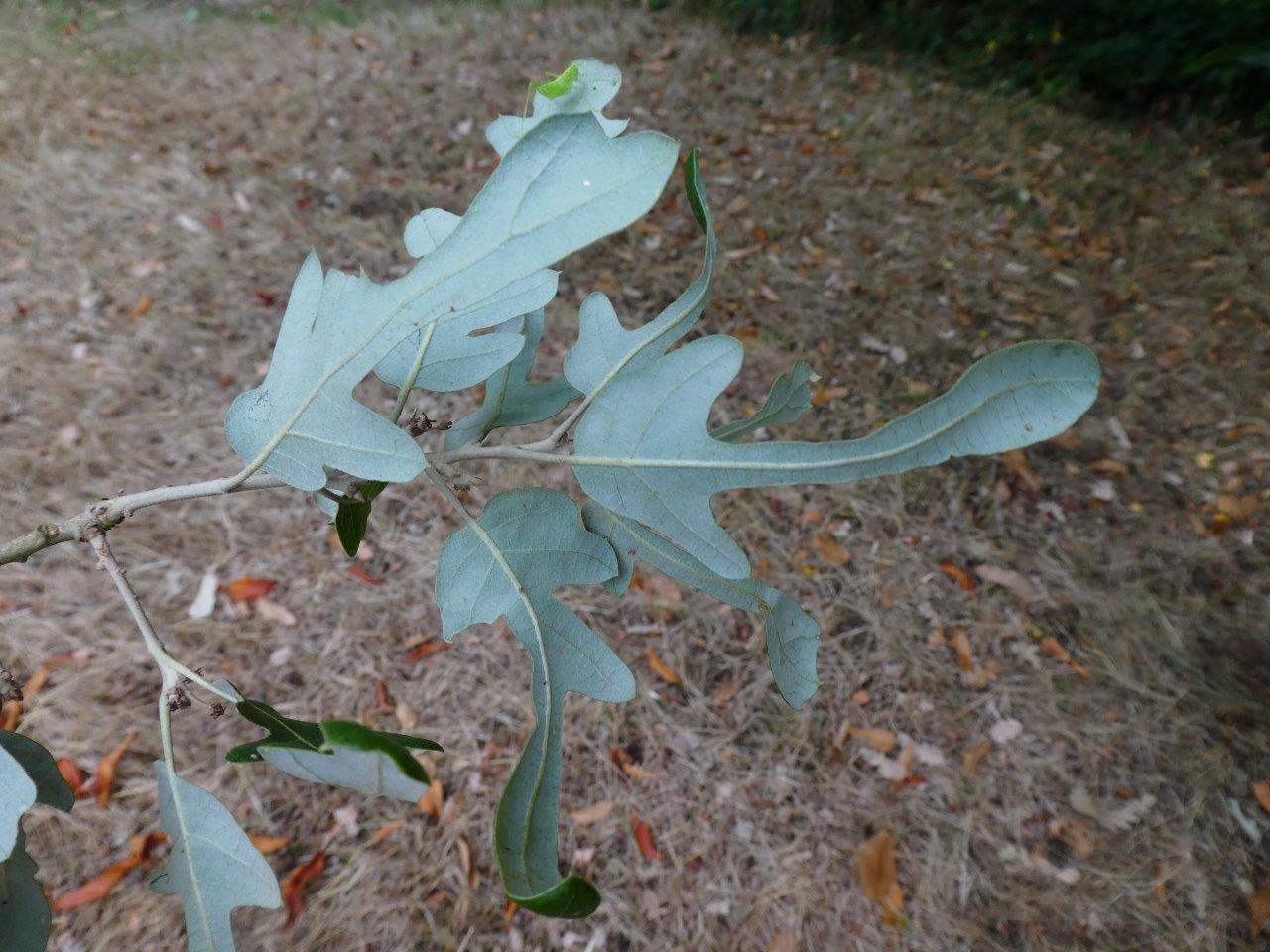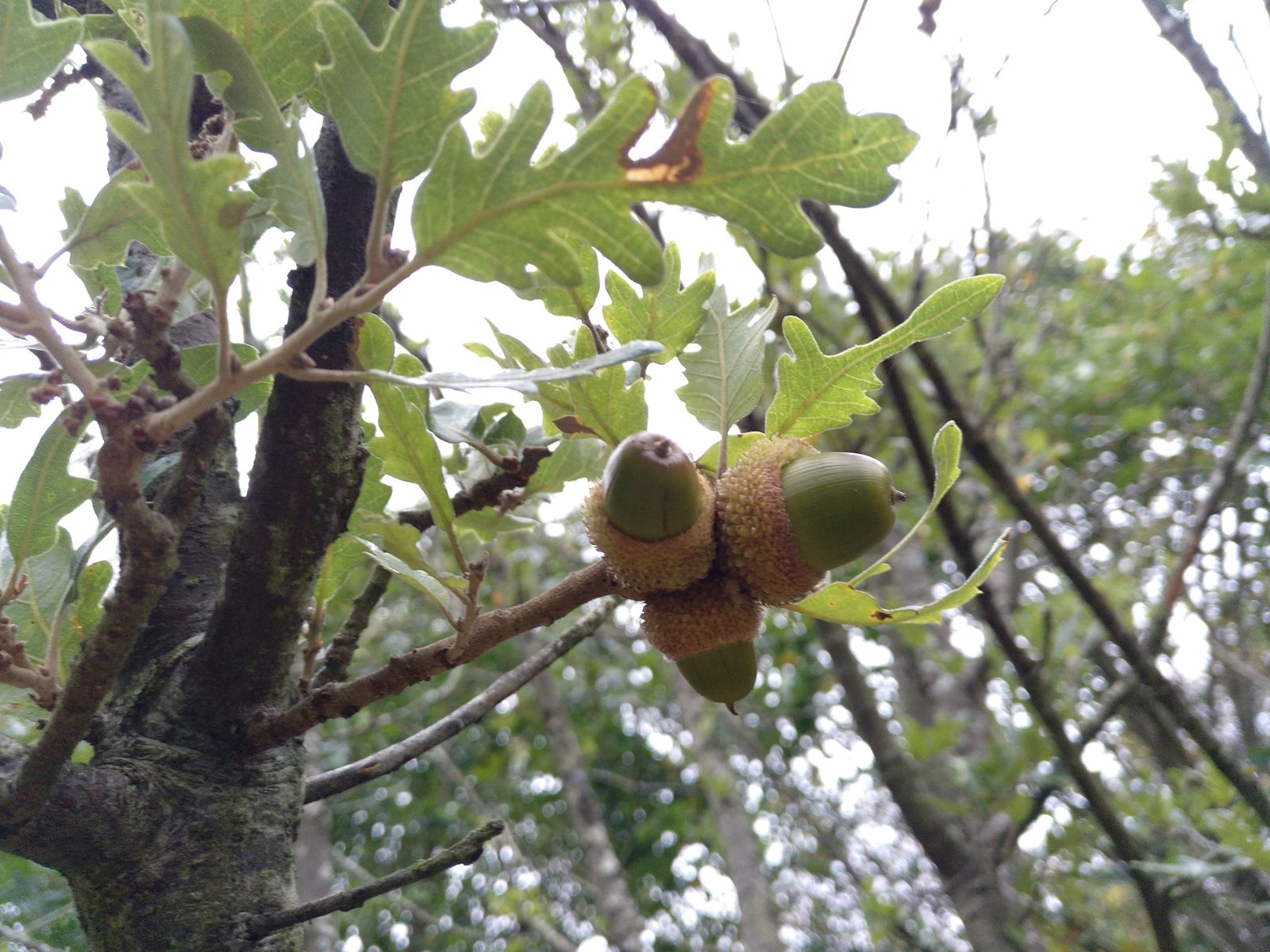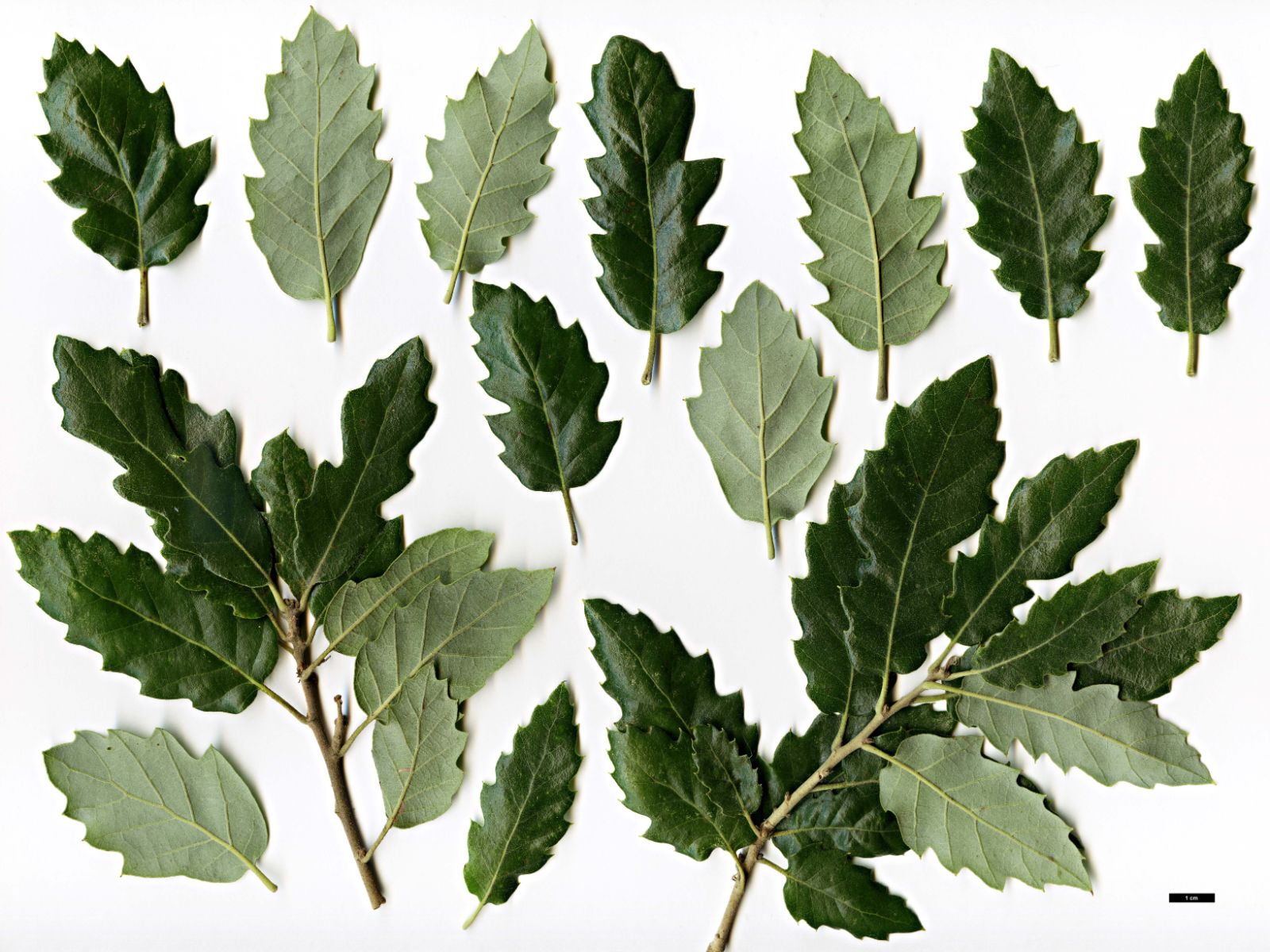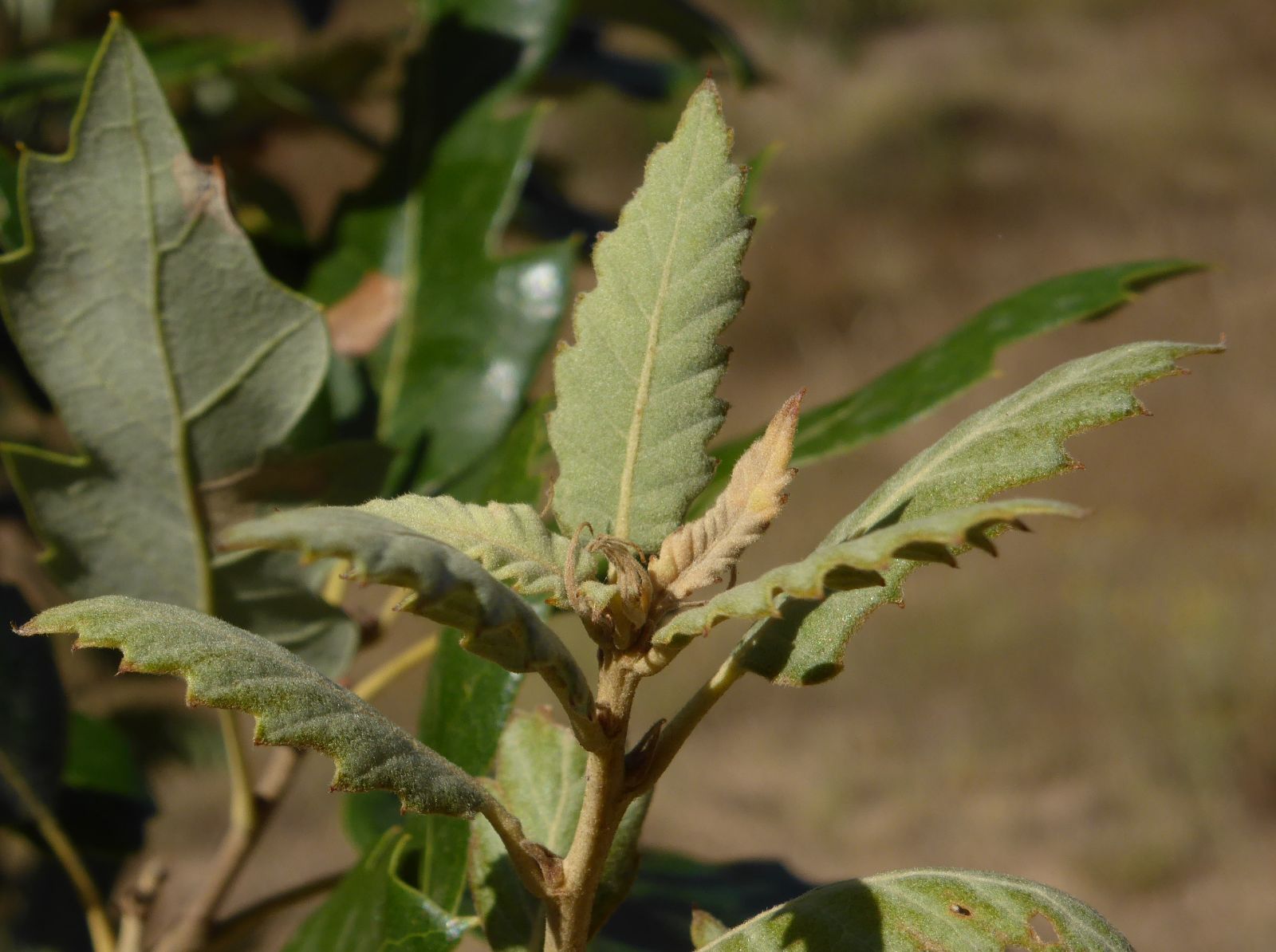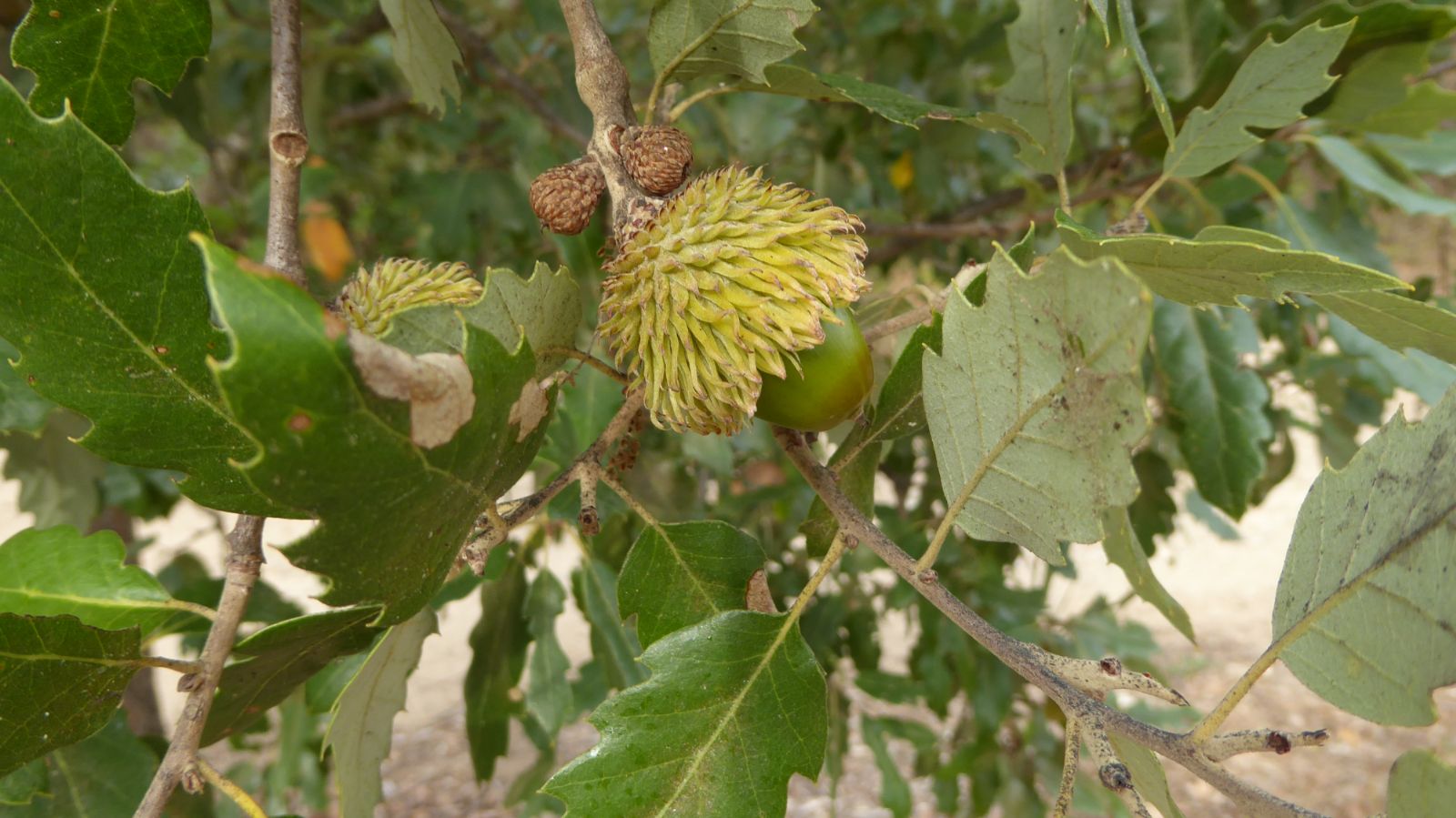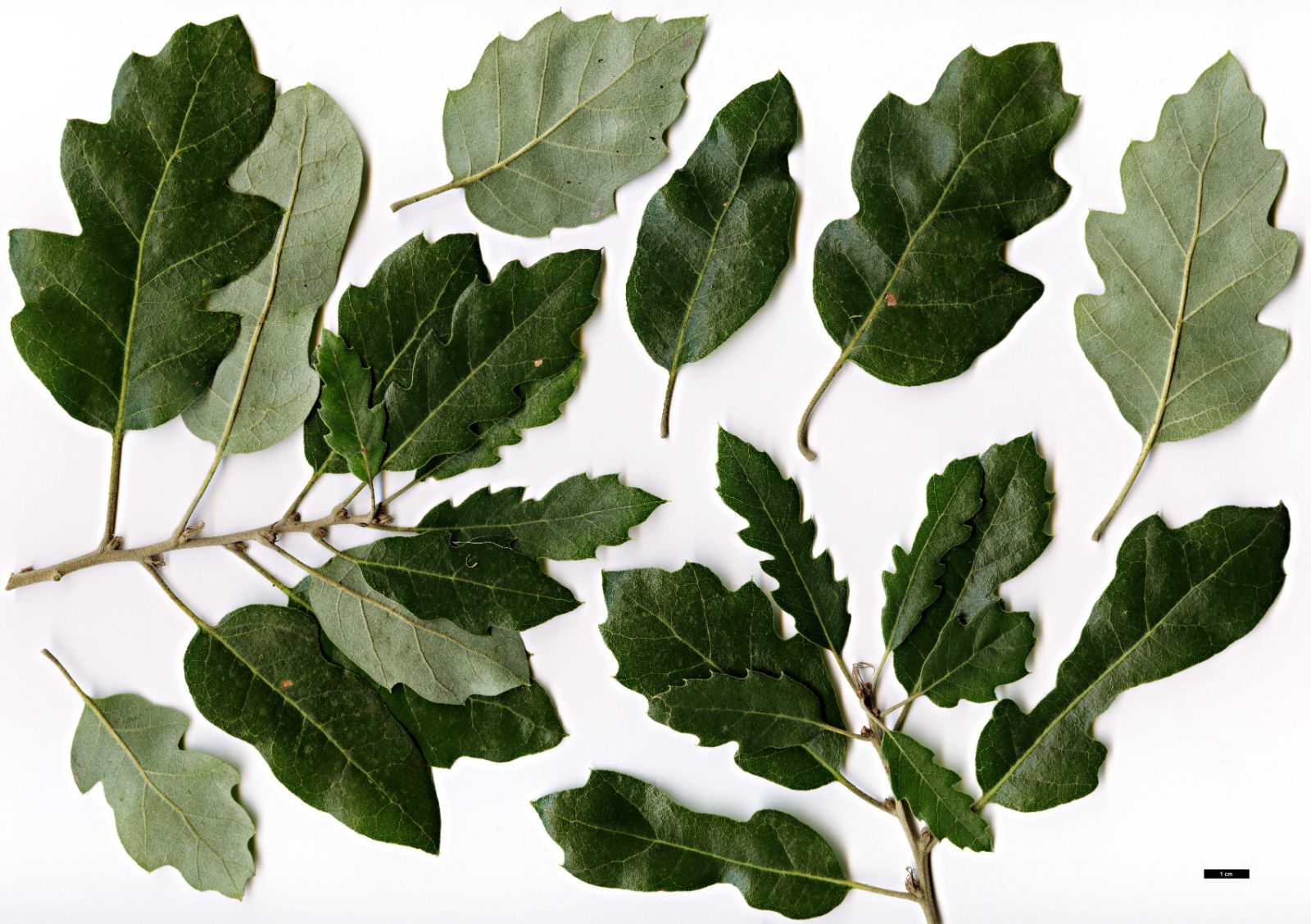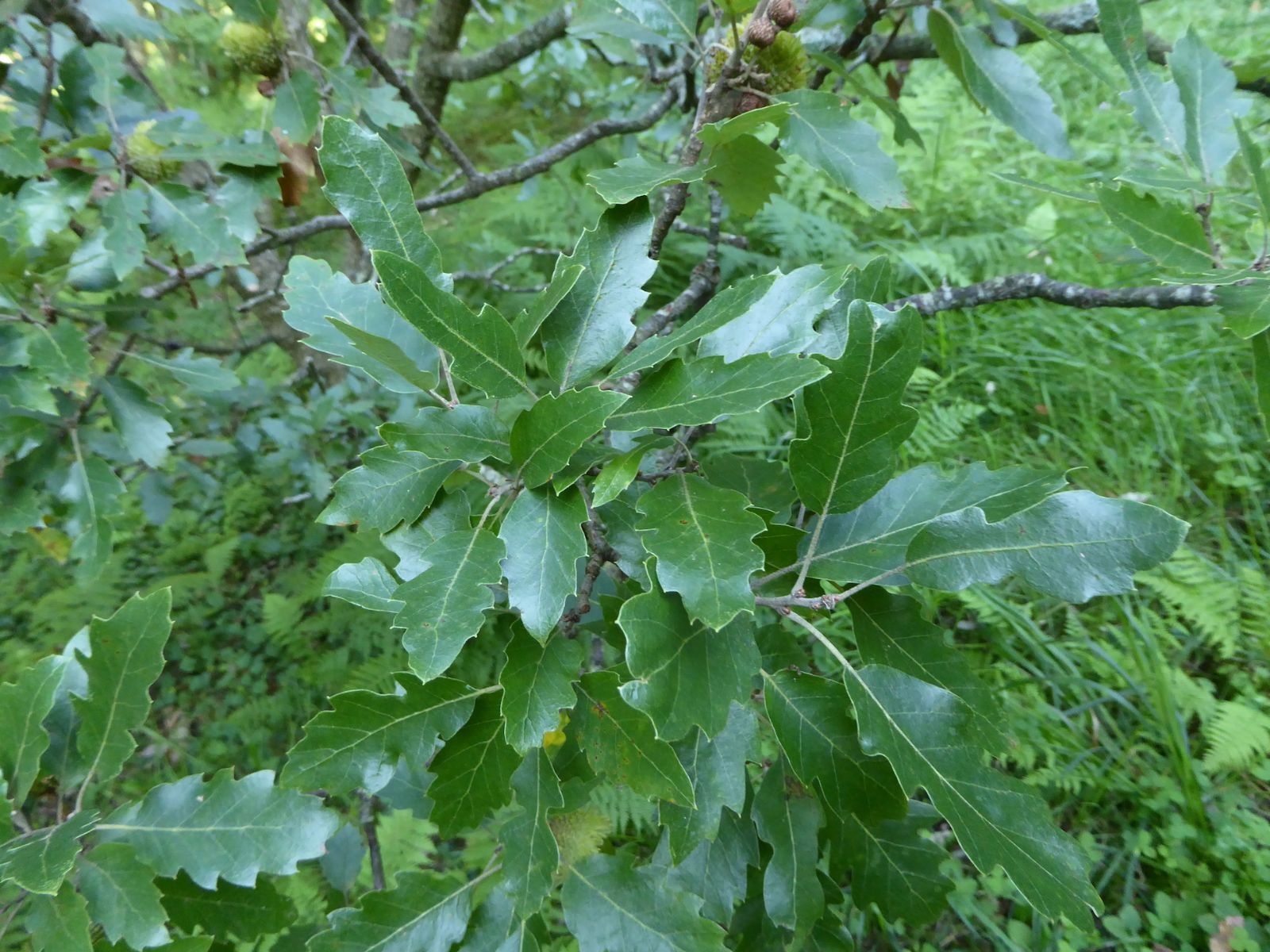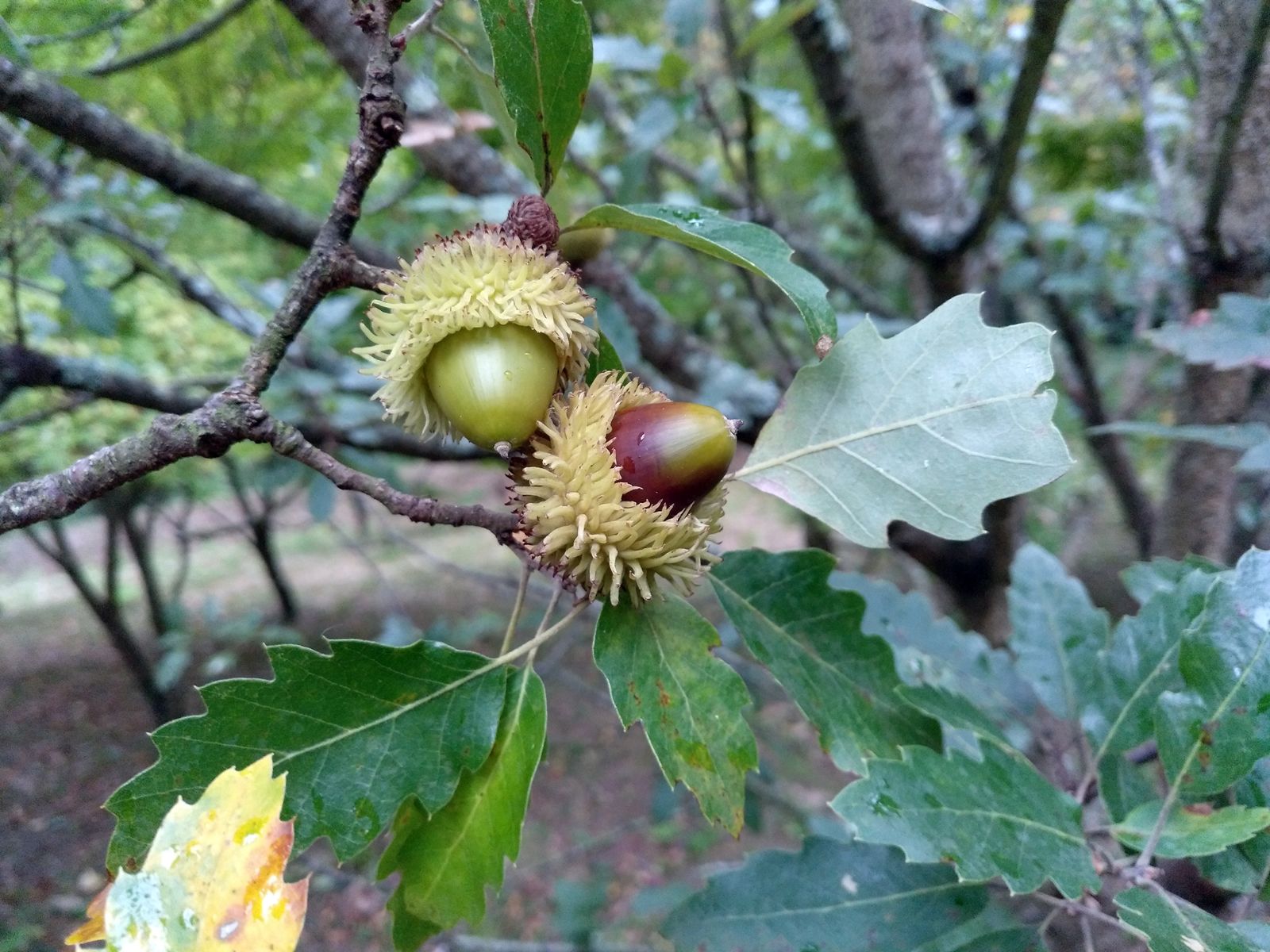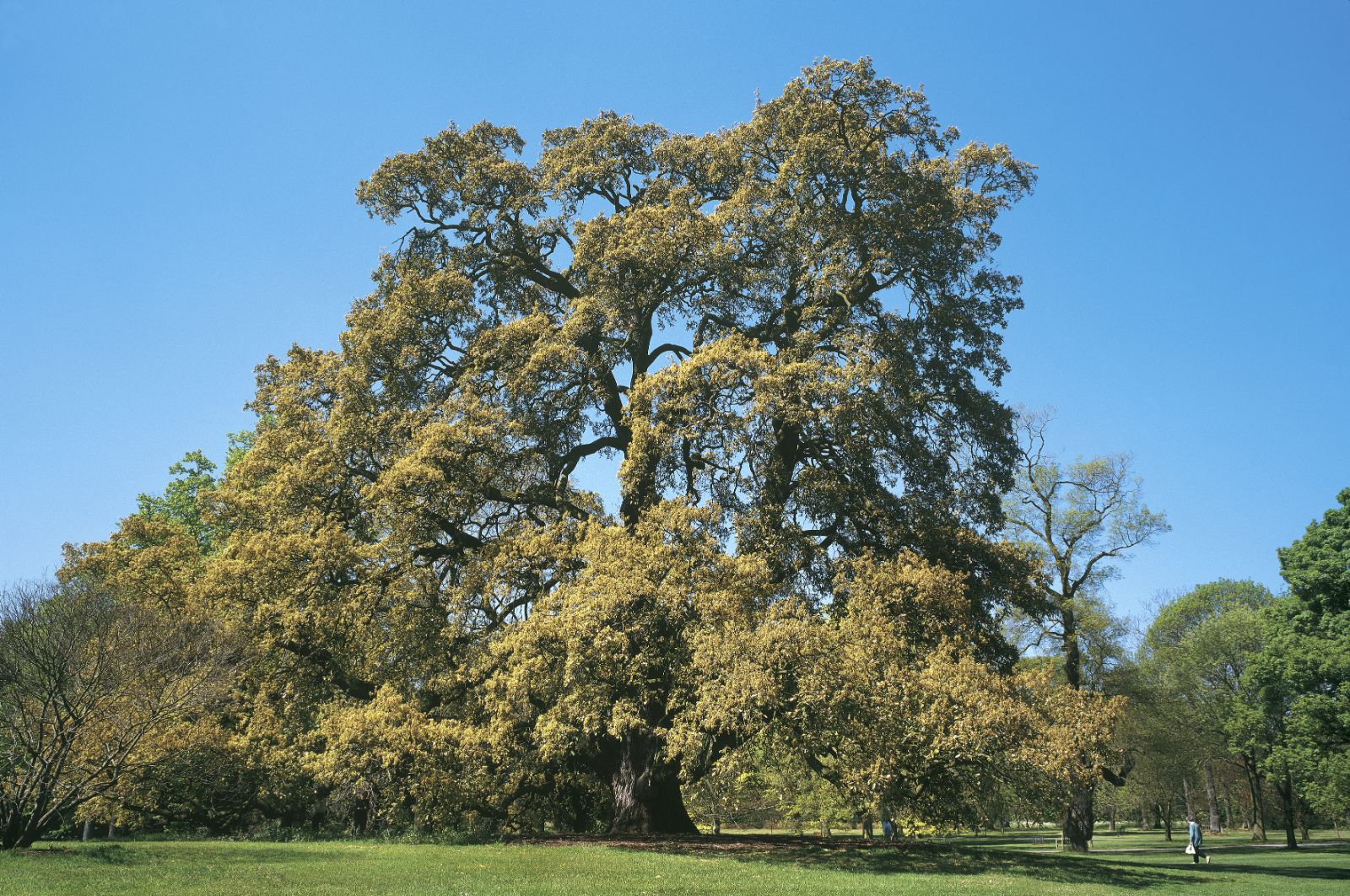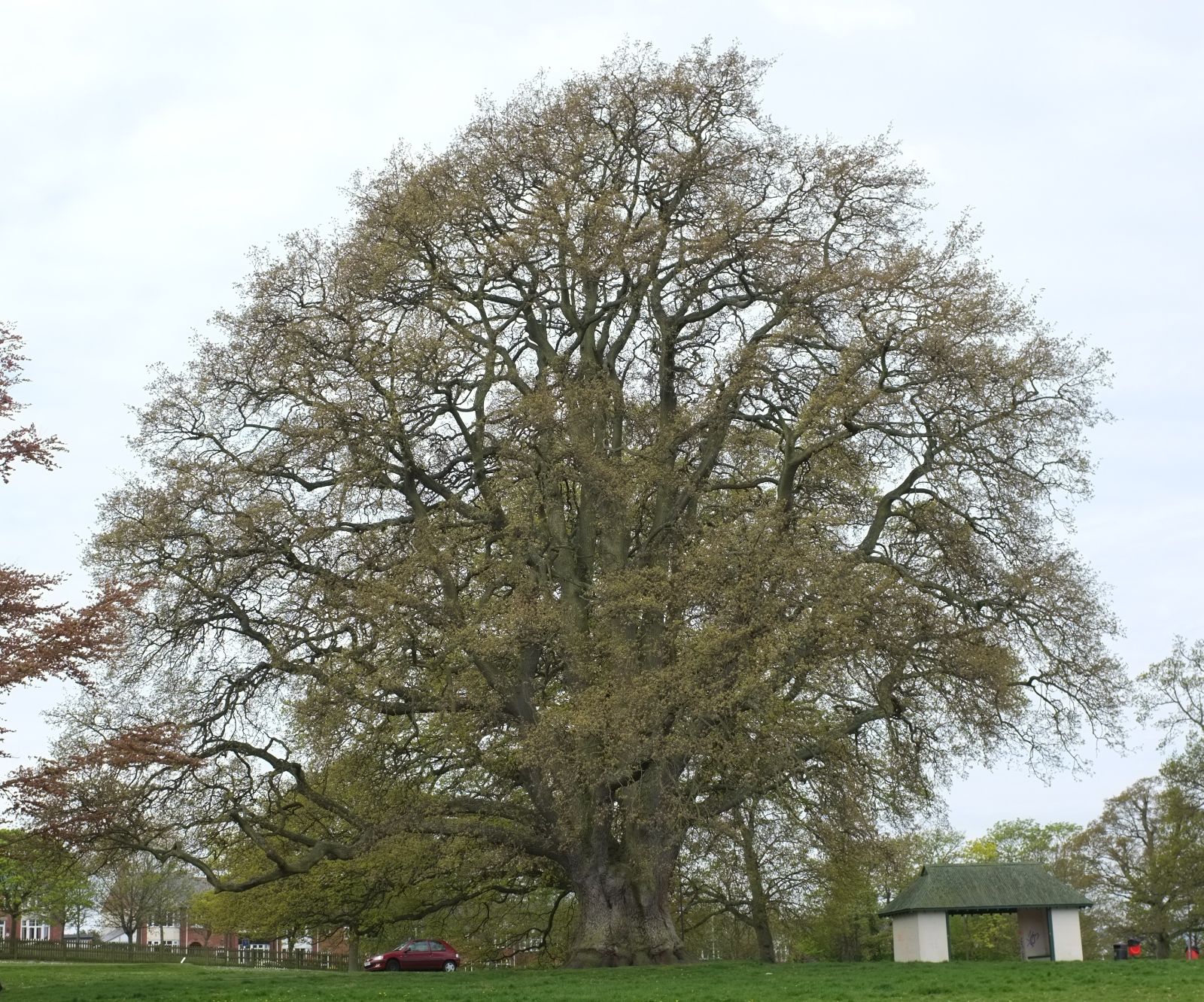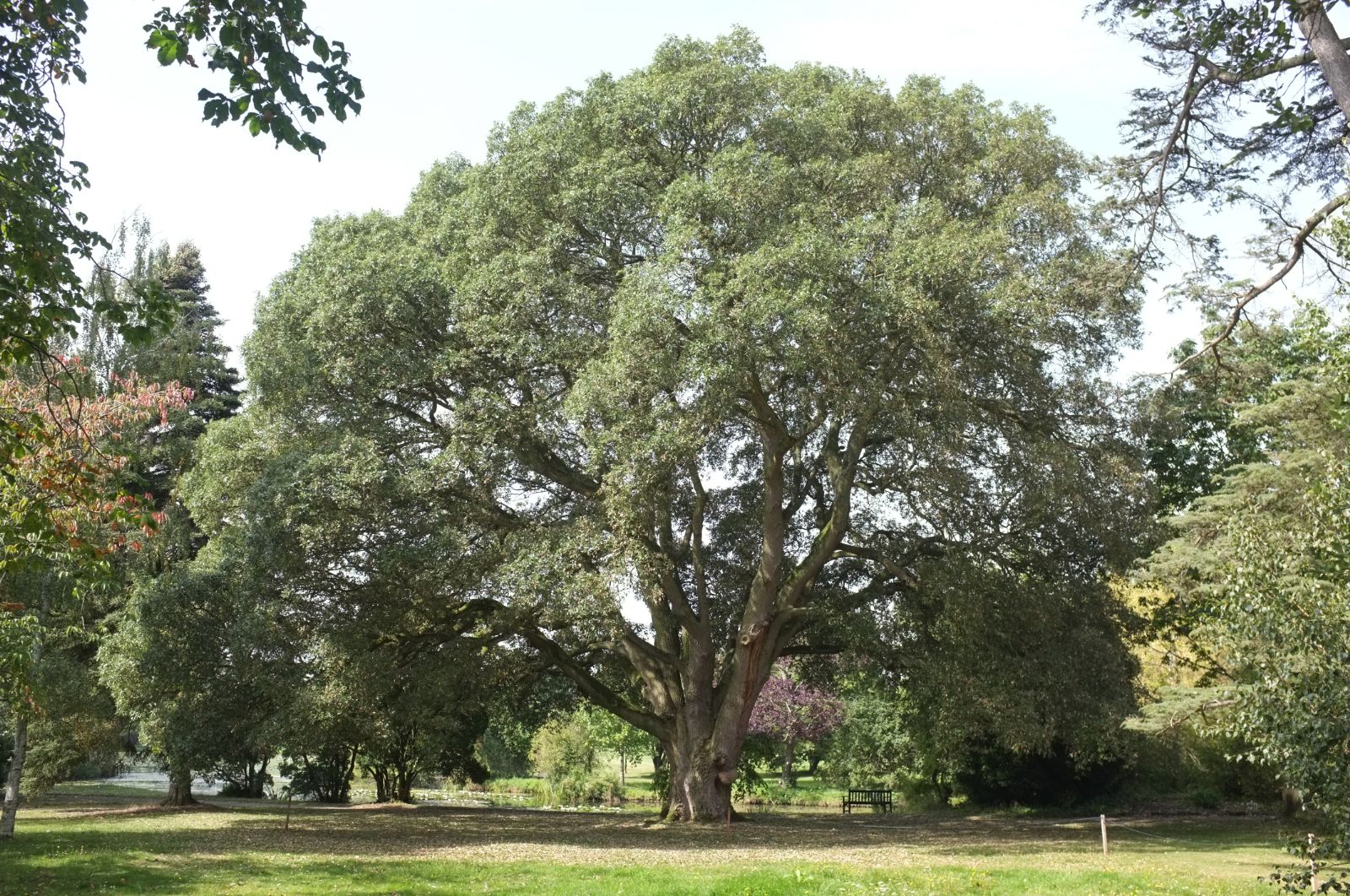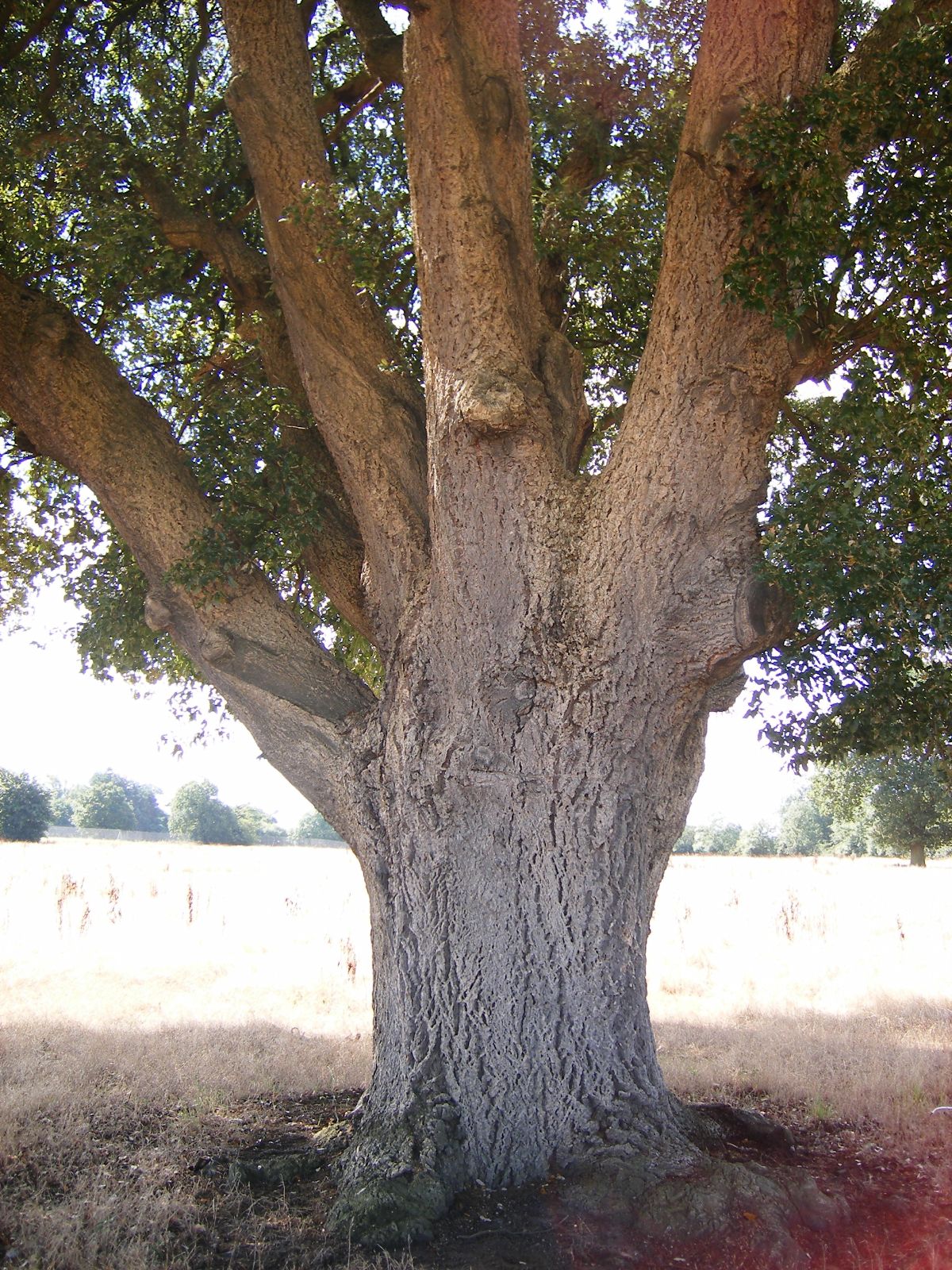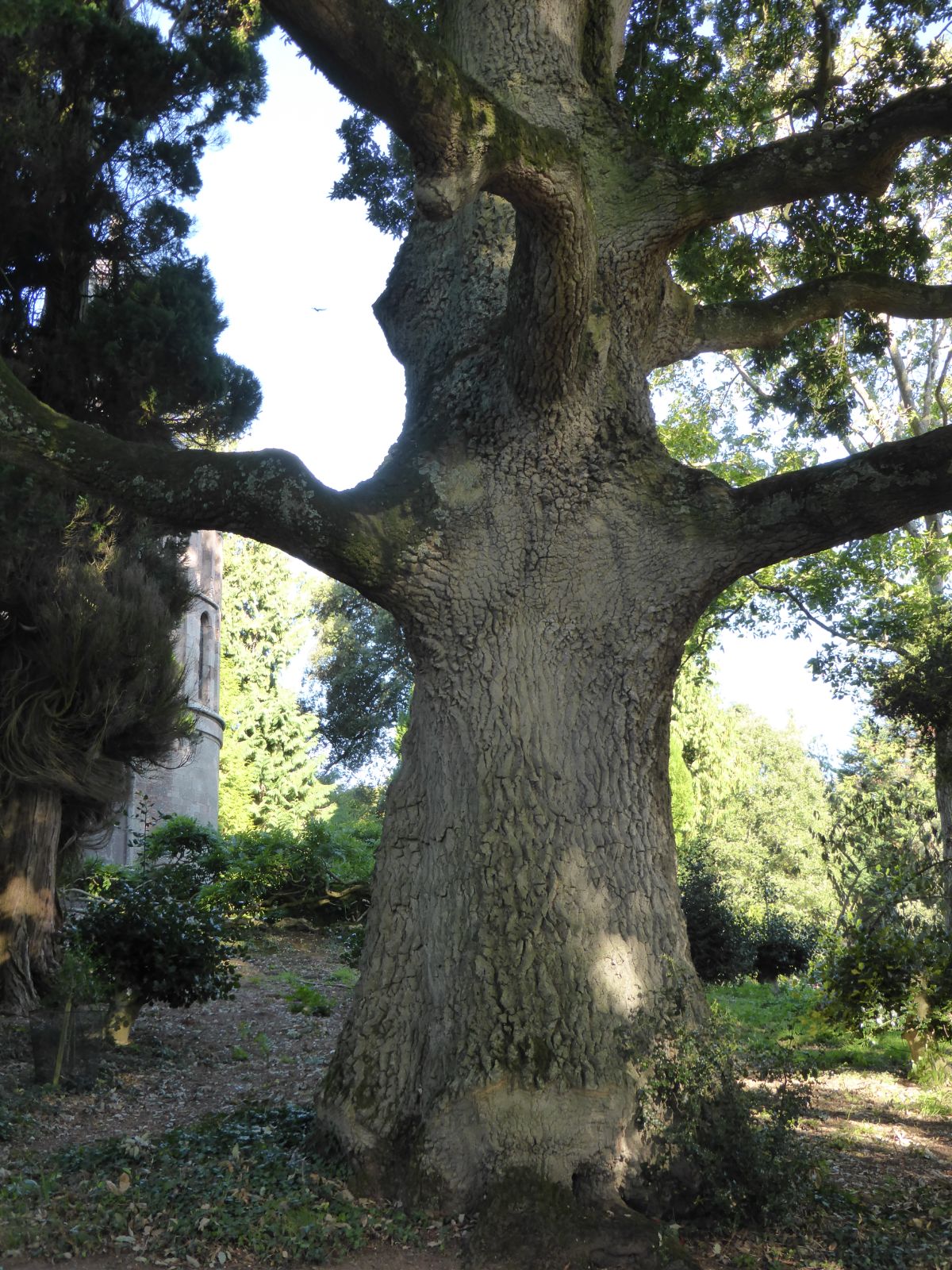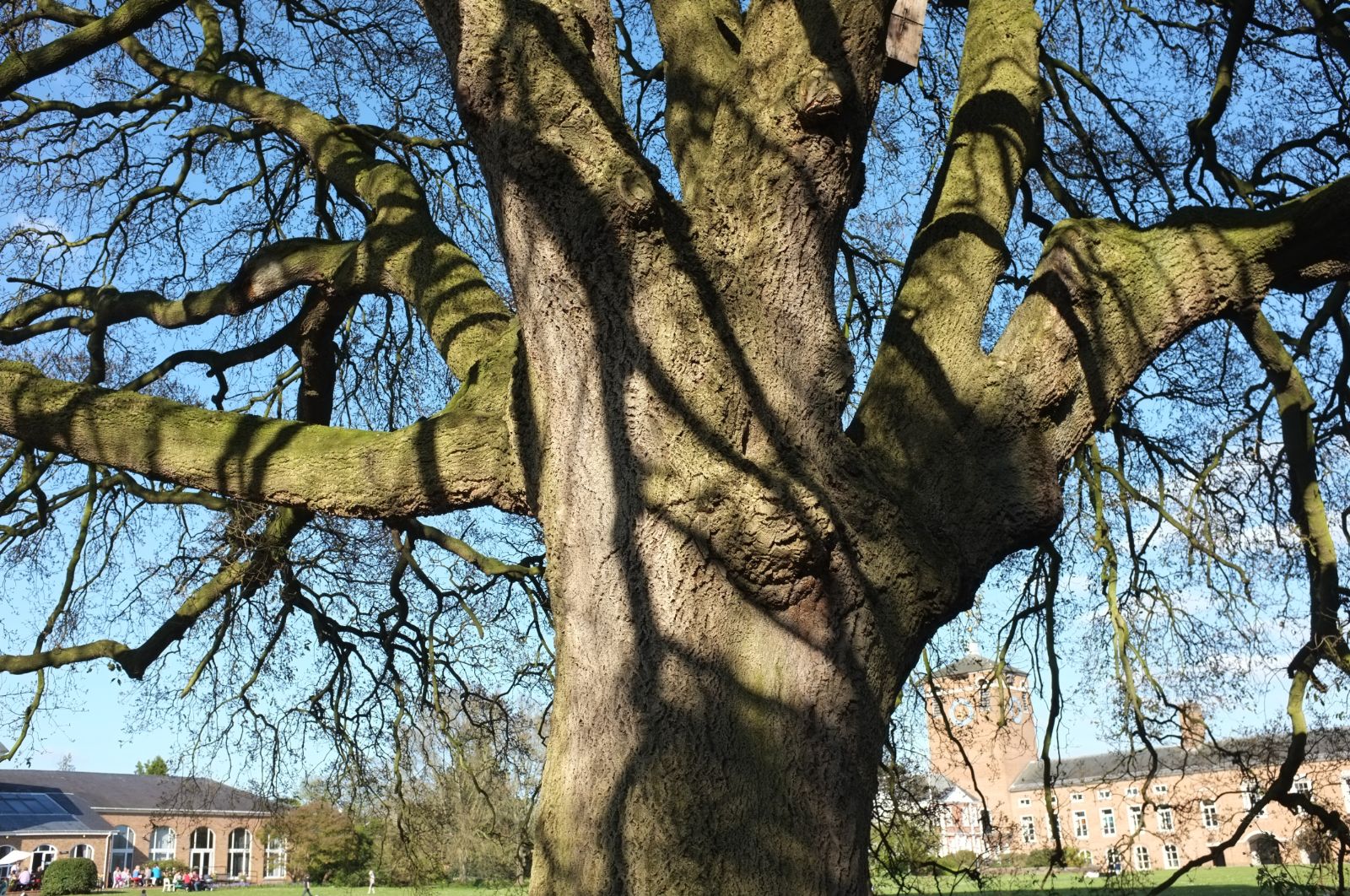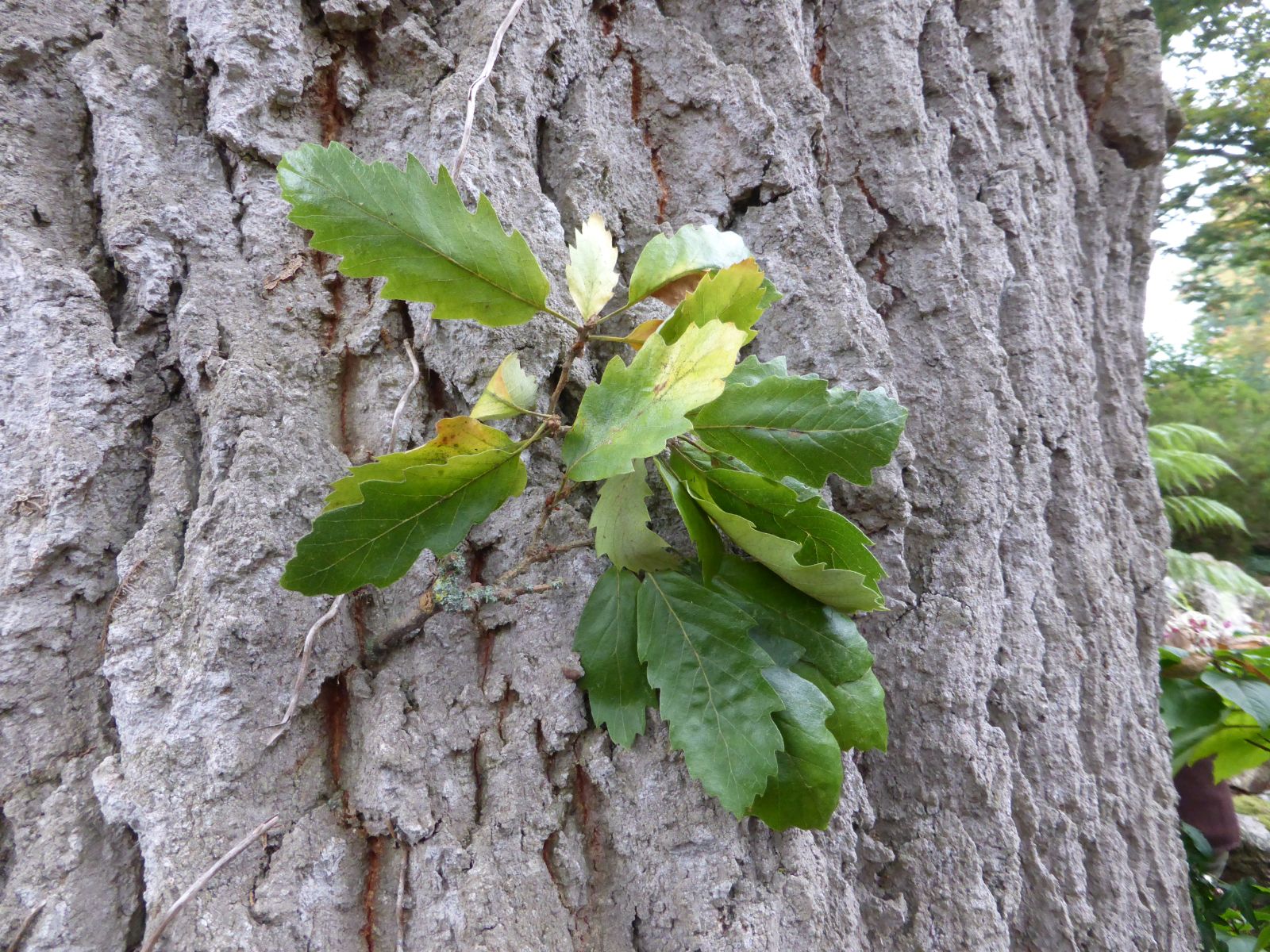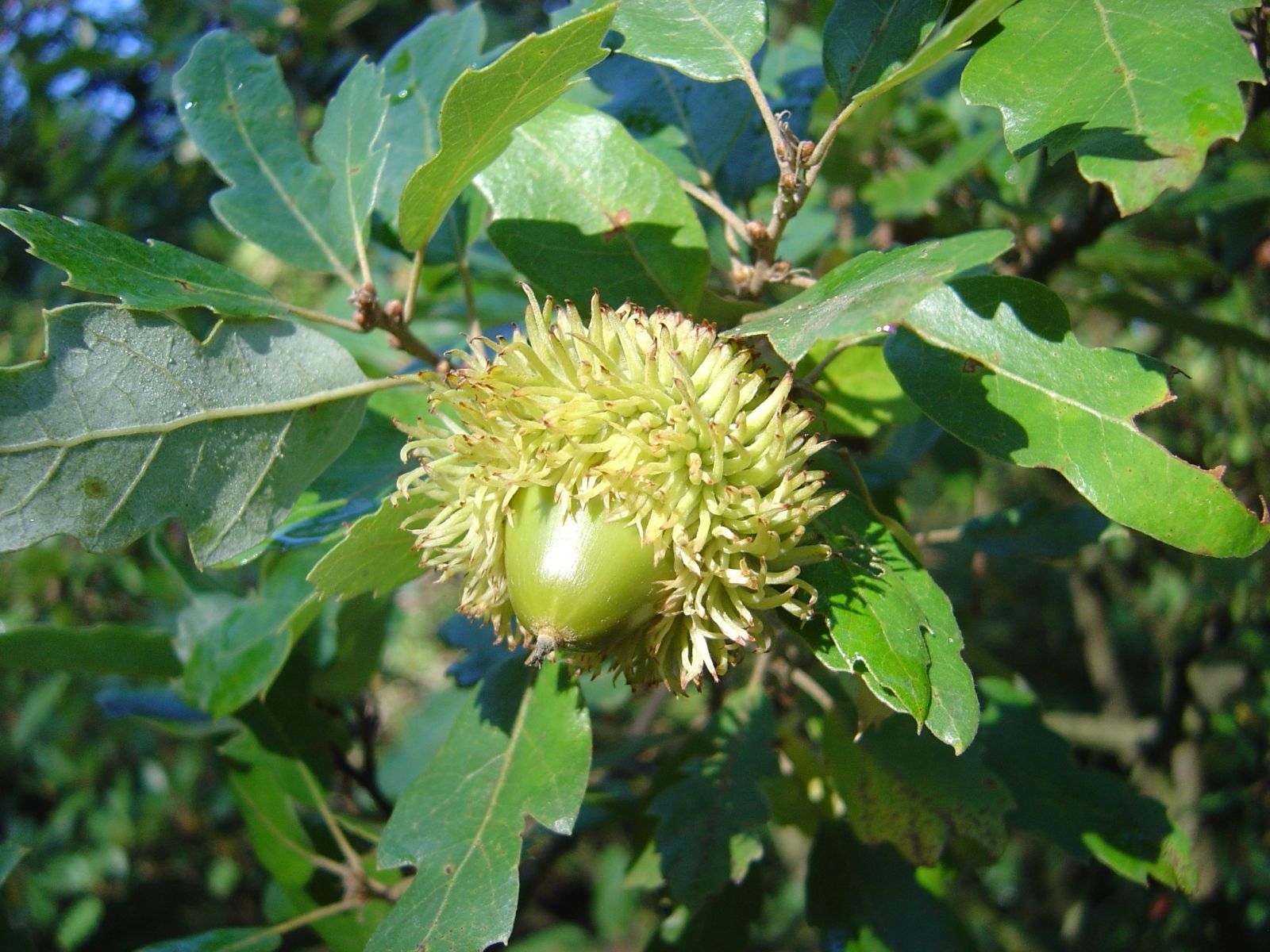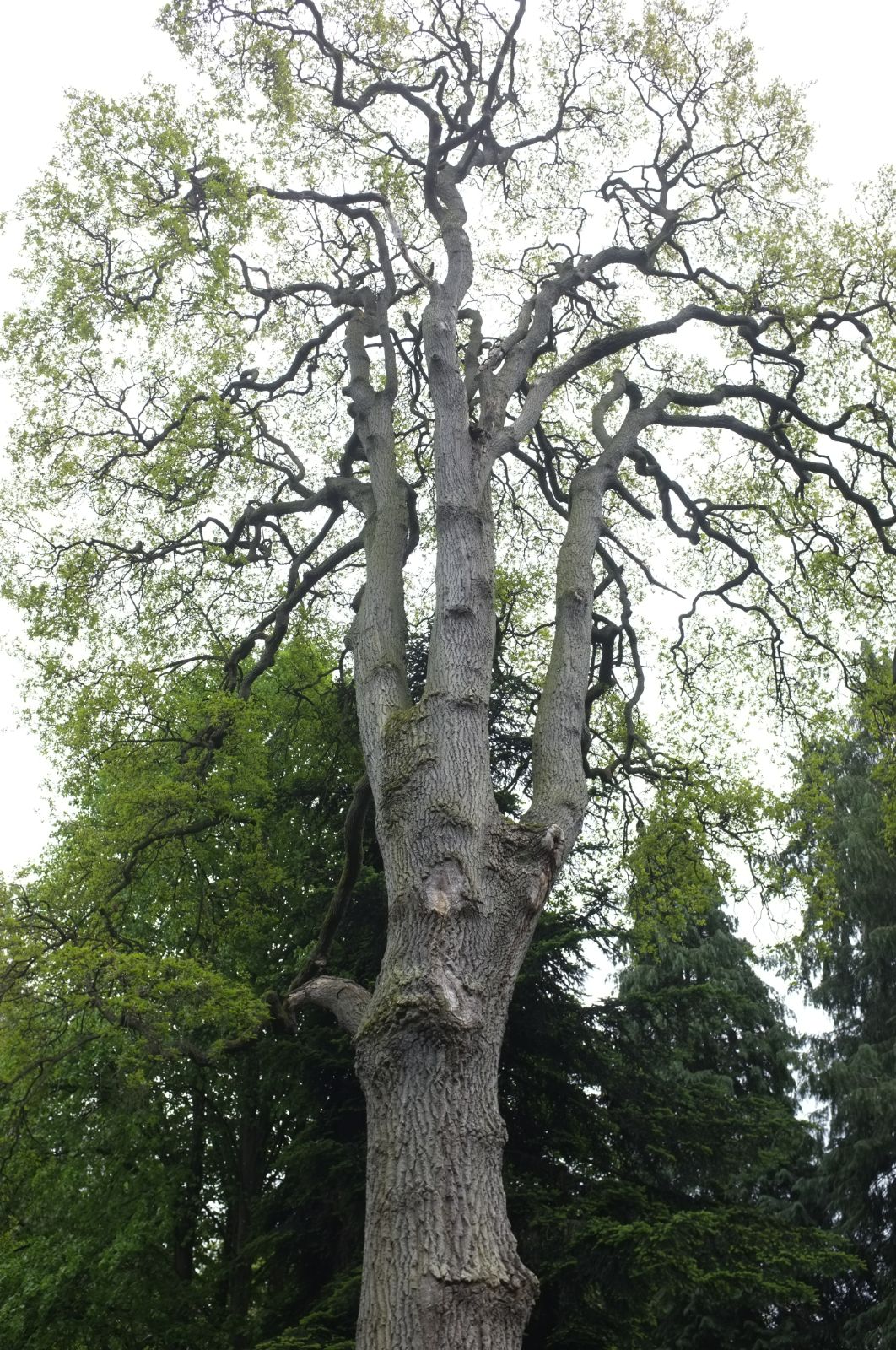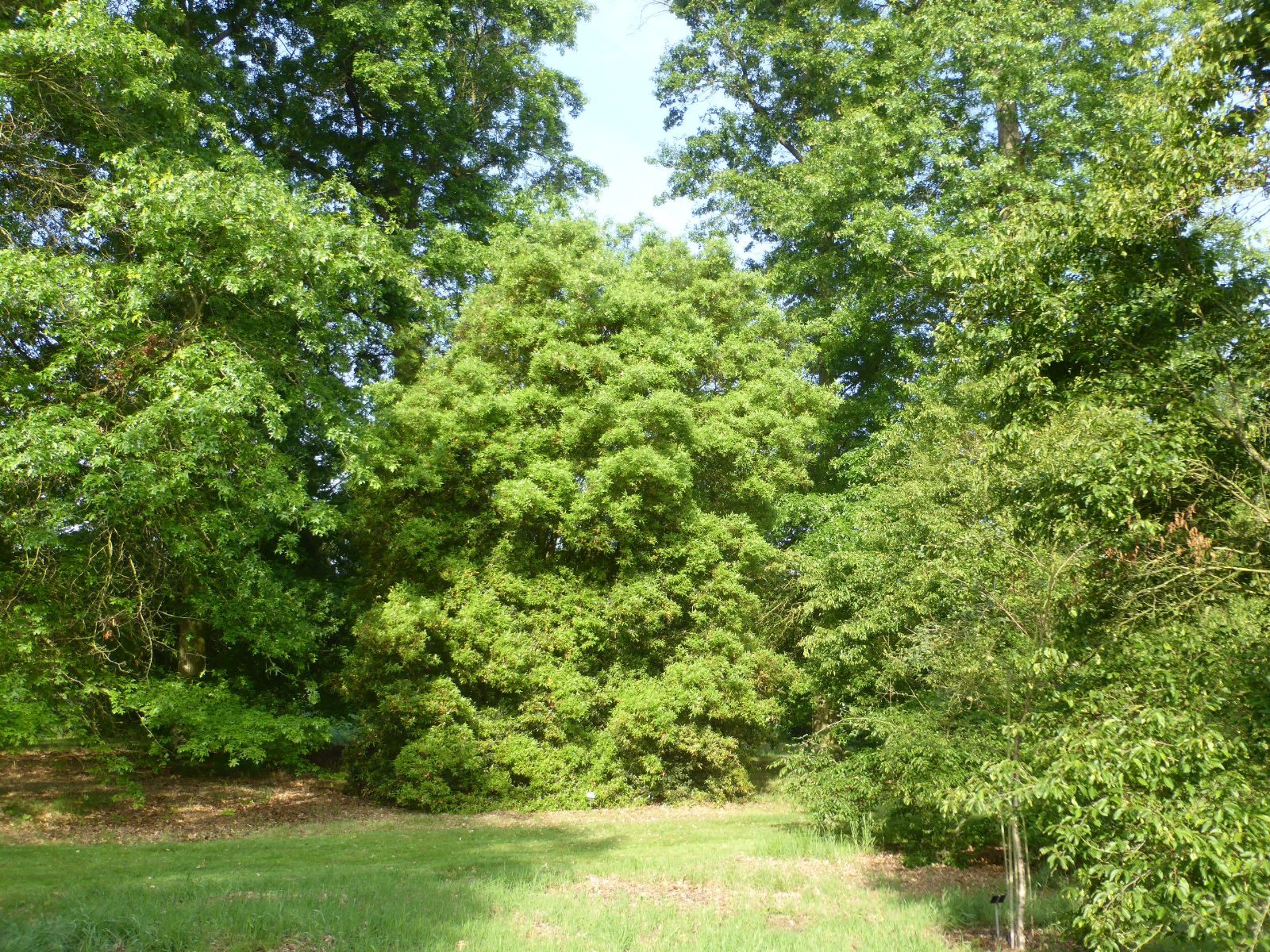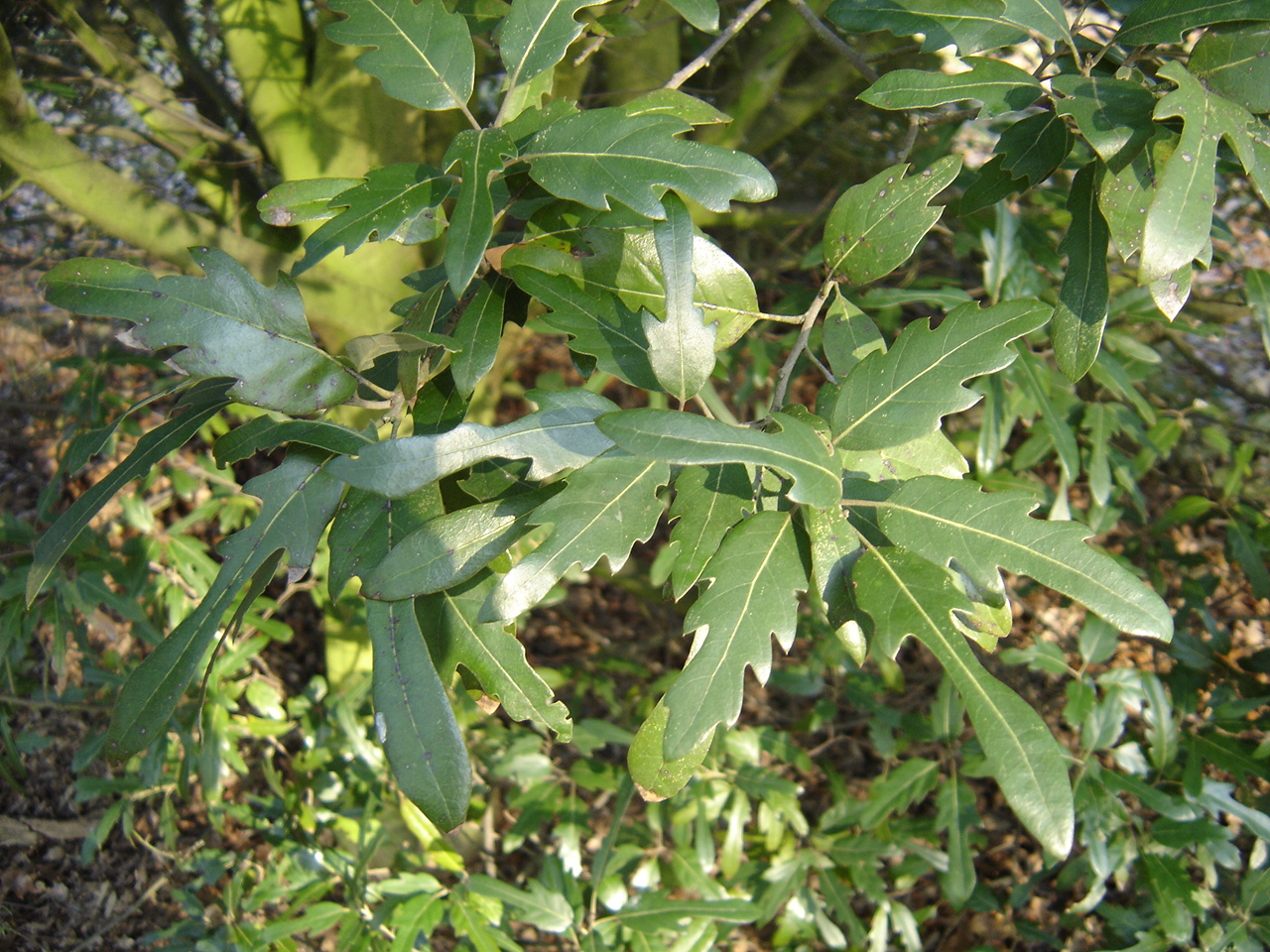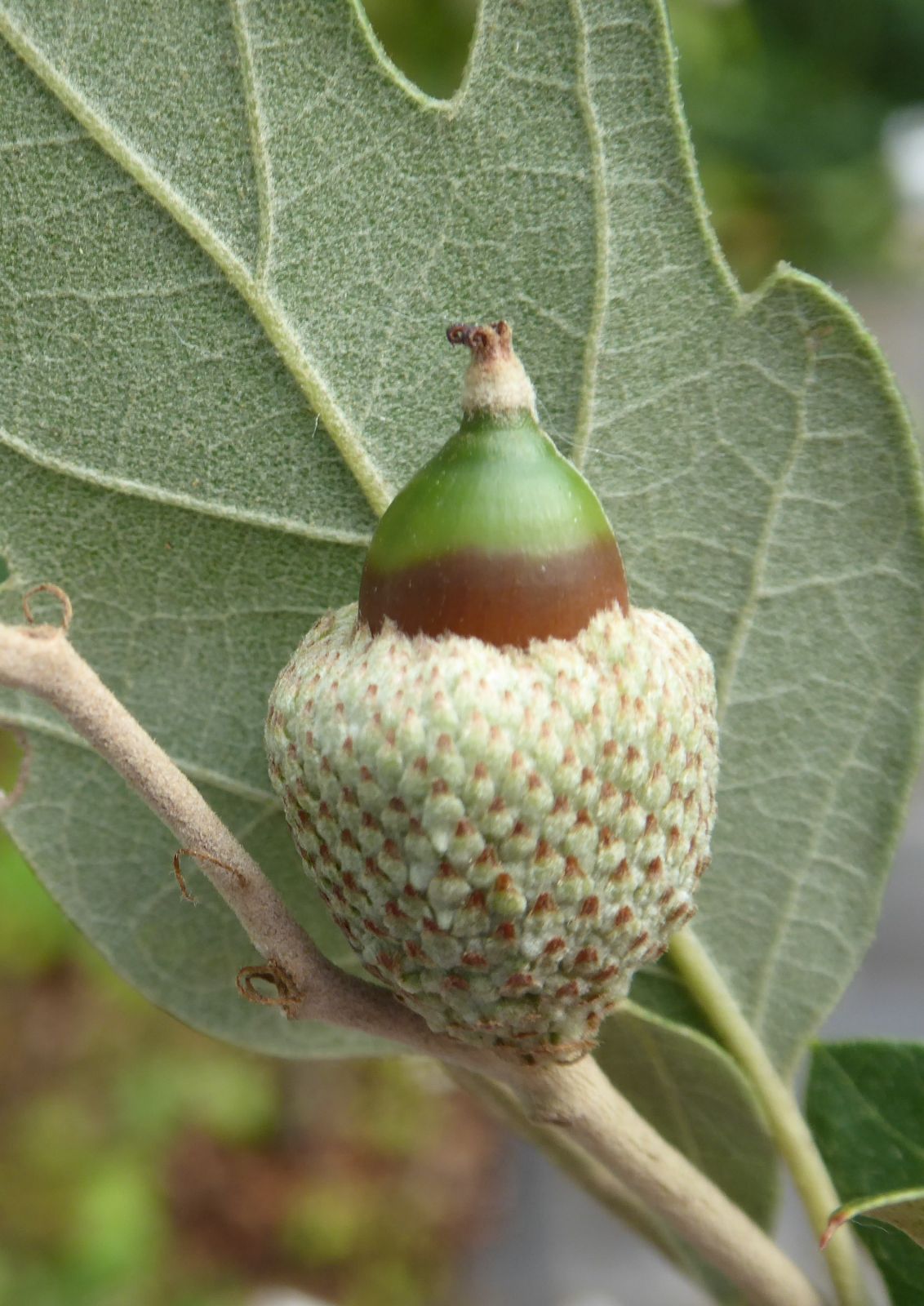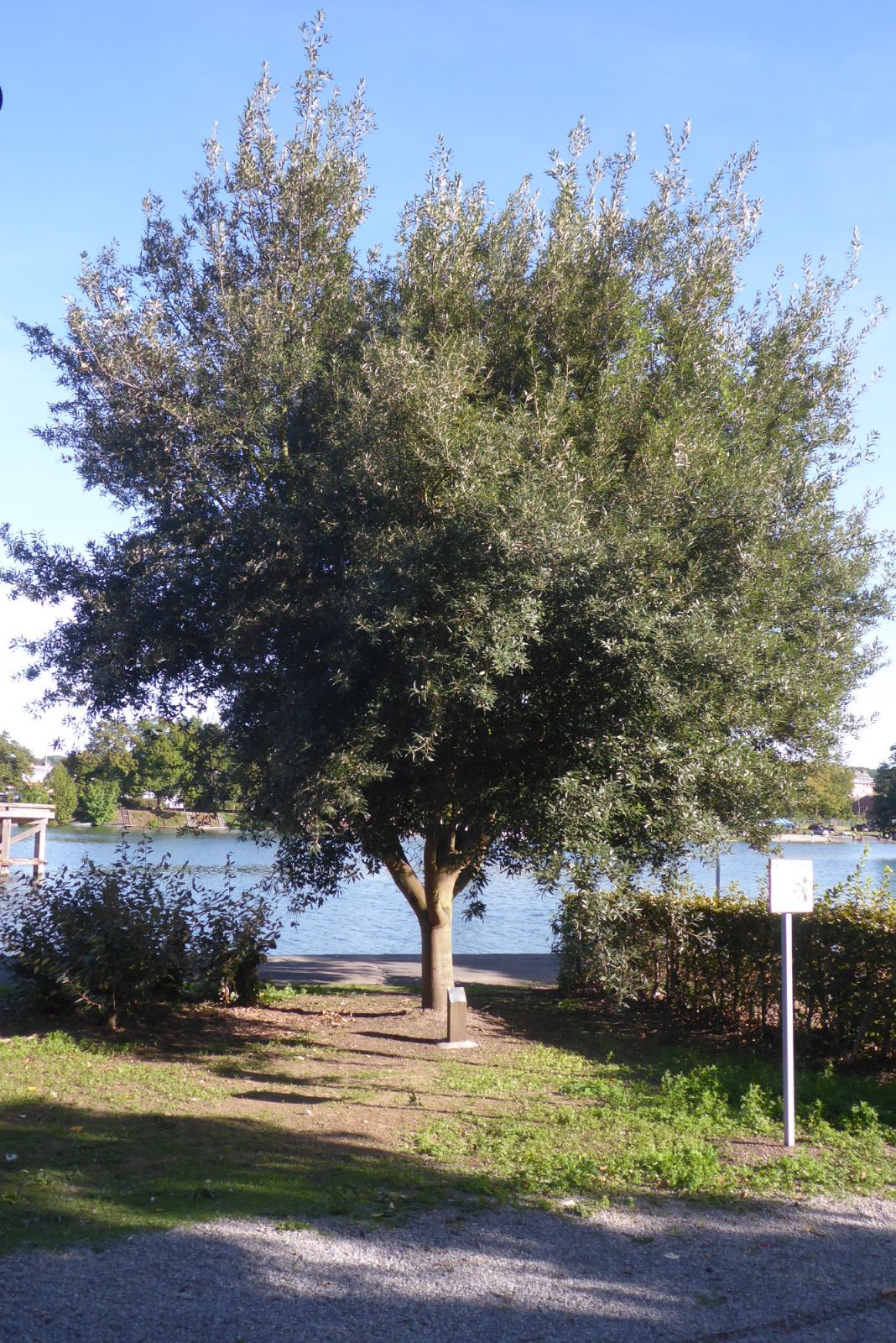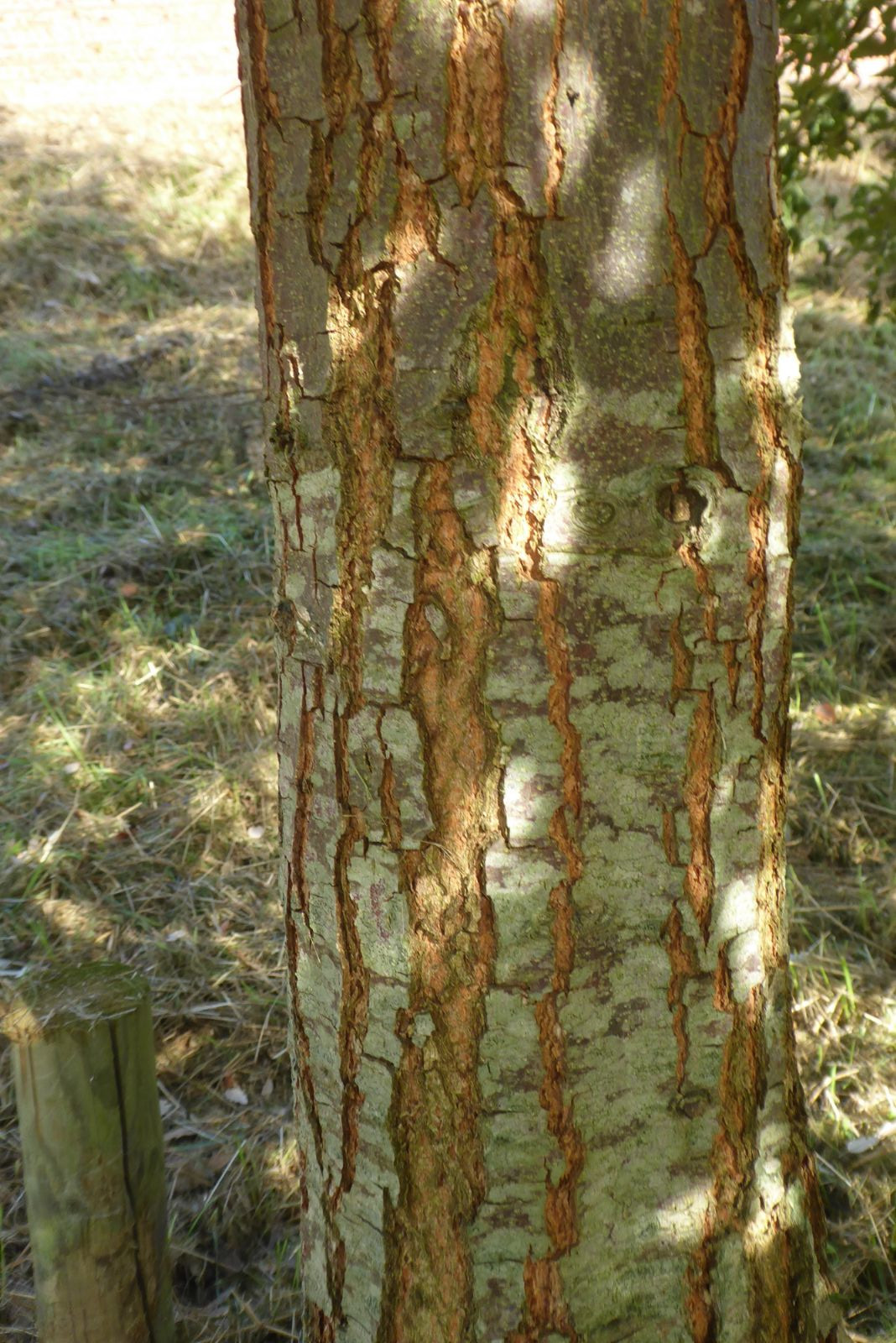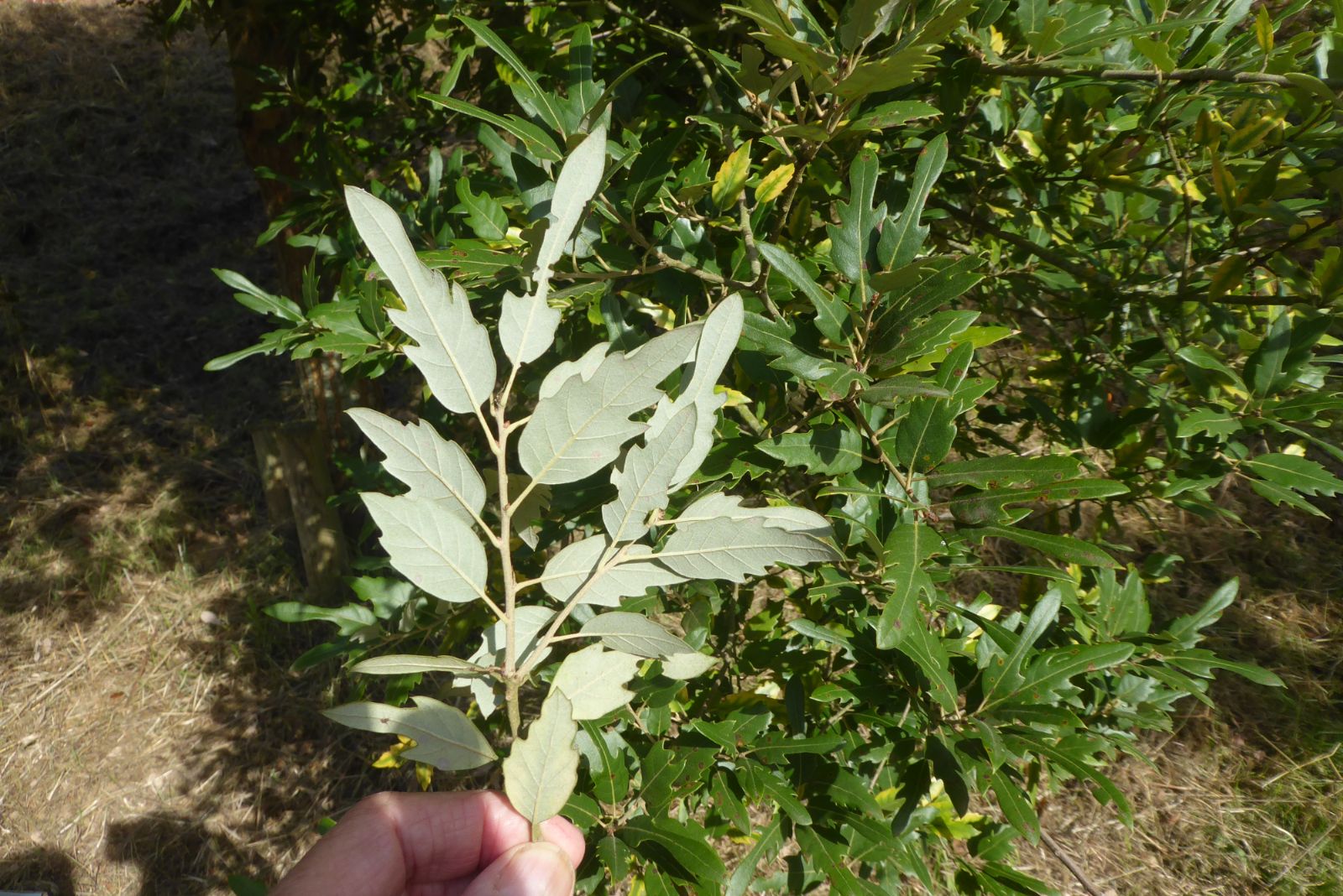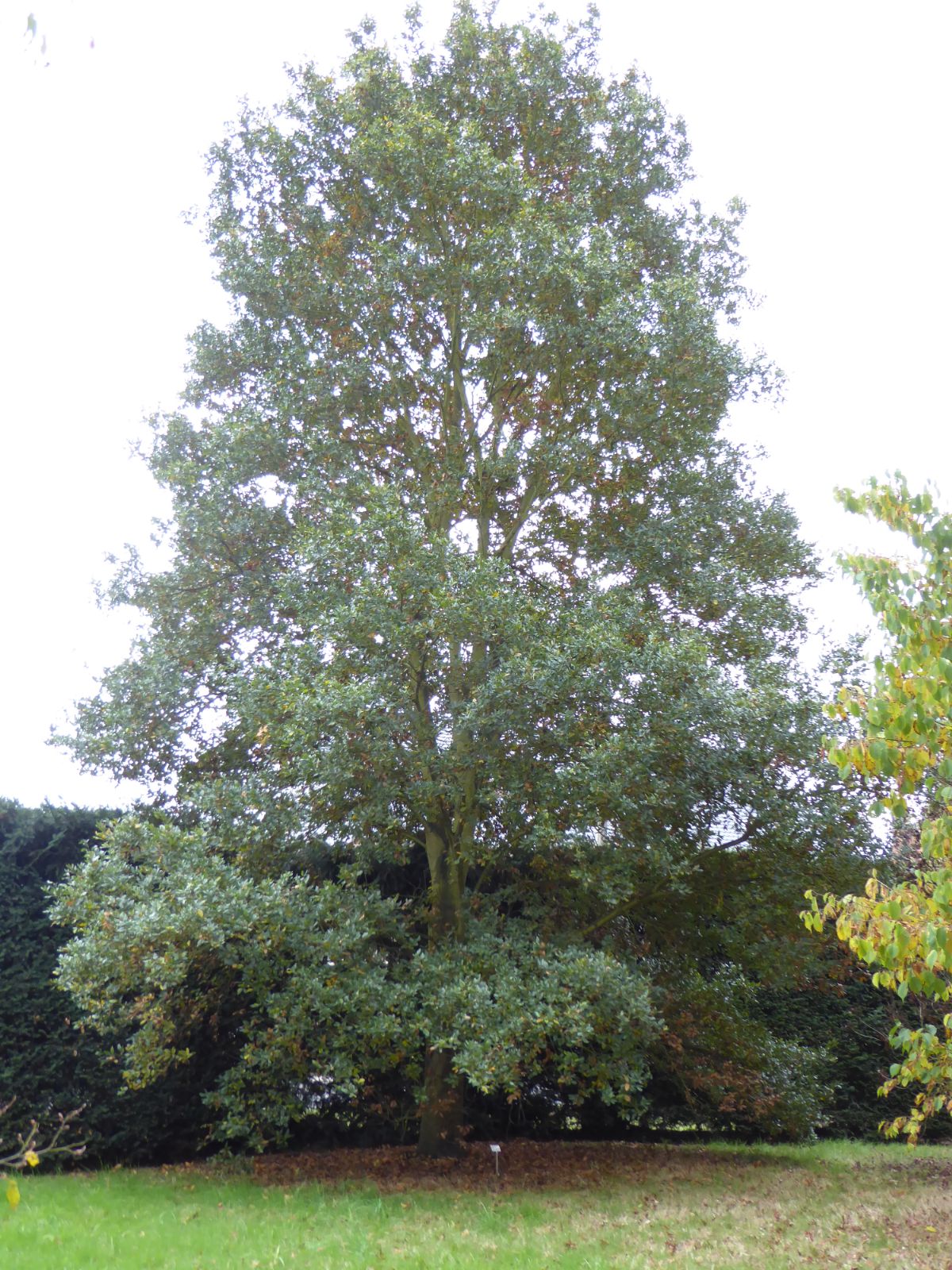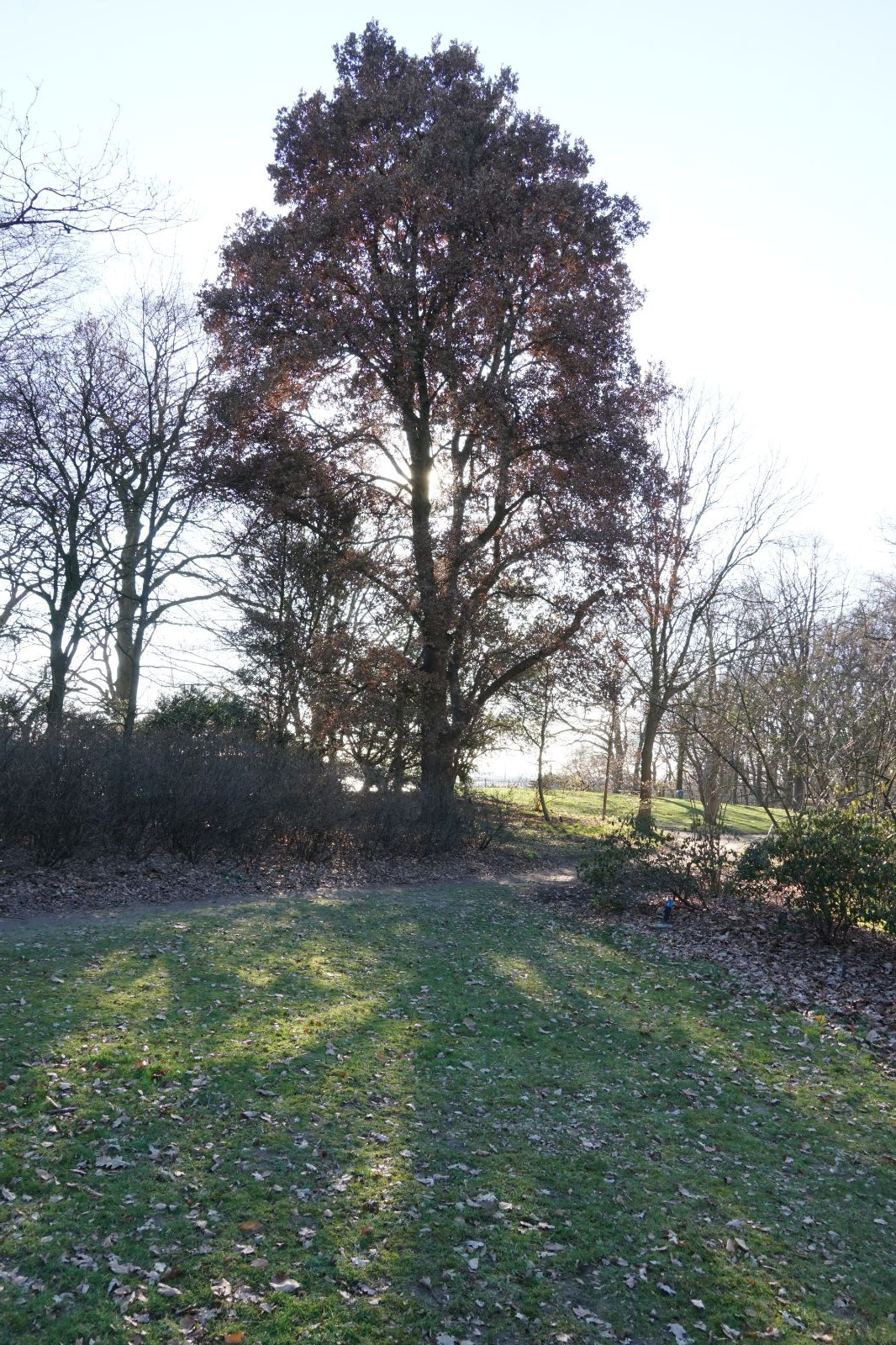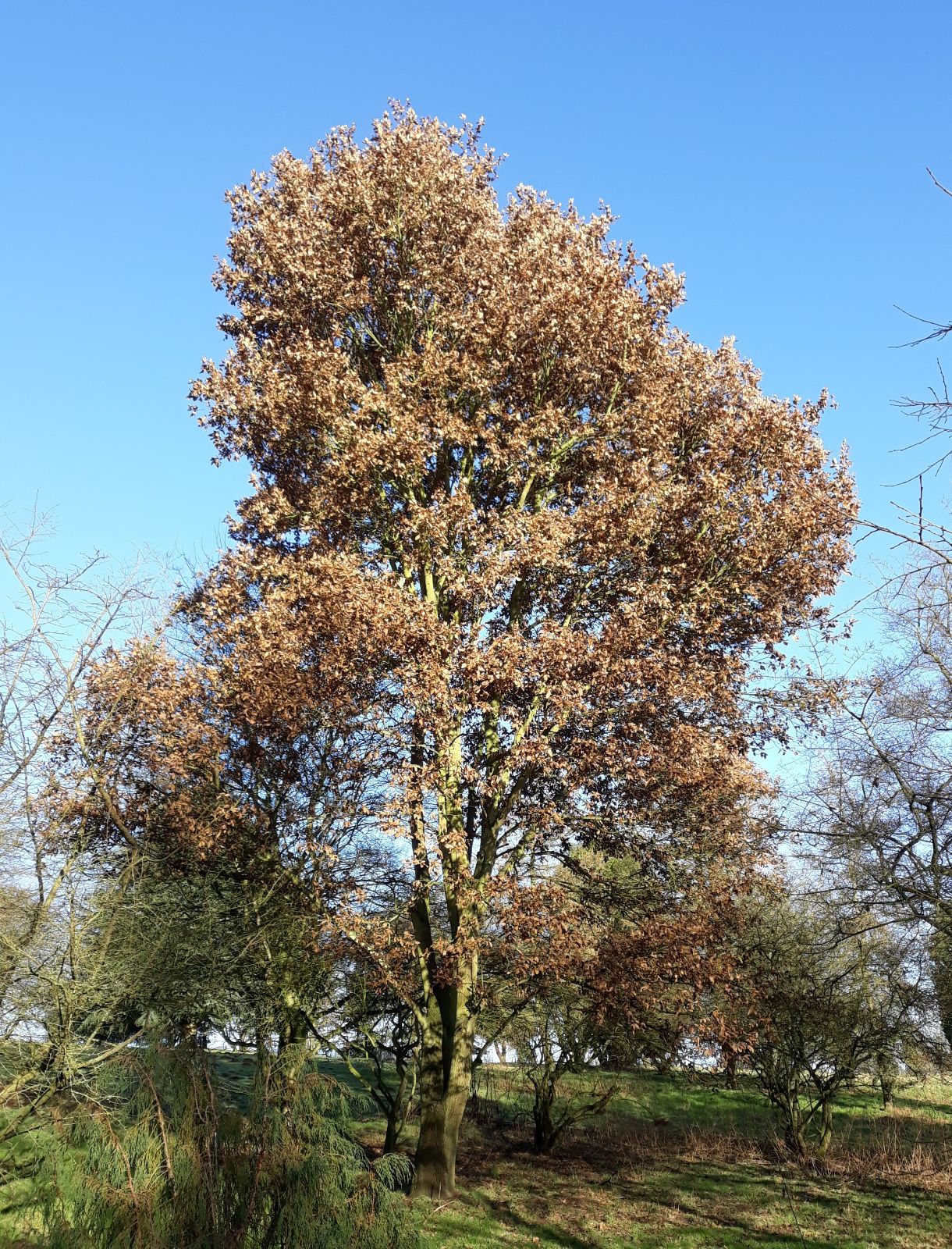Quercus × hispanica
Sponsor
Kindly sponsored by
The Trees and Shrubs Online Oak Consortium
Credits
Allen Coombes & Roderick Cameron (2021)
Recommended citation
Coombes, A. & Cameron, R. (2021), 'Quercus × hispanica' from the website Trees and Shrubs Online (treesandshrubsonline.
Genus
- Quercus
- Subgen. Cerris, Sect. Cerris
Common Names
- Drouis
- Cerrosughera
- Sugherella
Synonyms
- Quercus × crenata Lam.
- Quercus × haliphelos Guss.
- Quercus × pseudosuber Santi
- Quercus × turneri A. DC. [nom. illegit.] not Willd.
Infraspecifics
Other taxa in genus
- Quercus acerifolia
- Quercus acherdophylla
- Quercus acrodonta
- Quercus acuta
- Quercus acutifolia
- Quercus acutissima
- Quercus afares
- Quercus affinis
- Quercus agrifolia
- Quercus alba
- Quercus aliena
- Quercus alnifolia
- Quercus aquifolioides
- Quercus arizonica
- Quercus arkansana
- Quercus aucheri
- Quercus augustini
- Quercus austrina
- Quercus × auzendei
- Quercus baloot
- Quercus bambusifolia
- Quercus baronii
- Quercus bicolor
- Quercus brantii
- Quercus buckleyi
- Quercus canariensis
- Quercus canbyi
- Quercus candicans
- Quercus castanea
- Quercus castaneifolia
- Quercus cerris
- Quercus chenii
- Quercus chrysolepis
- Quercus coccifera
- Quercus cocciferoides
- Quercus coccinea
- Quercus conspersa
- Quercus crassifolia
- Quercus crassipes
- Quercus delavayi
- Quercus dentata
- Quercus deserticola
- Quercus dolicholepis
- Quercus douglasii
- Quercus dumosa
- Quercus durifolia
- Quercus eduardii
- Quercus ellipsoidalis
- Quercus emoryi
- Quercus engelmannii
- Quercus engleriana
- Quercus euboica
- Quercus eugeniifolia
- Quercus fabri
- Quercus faginea
- Quercus falcata
- Quercus floribunda
- Quercus frainetto
- Quercus franchetii
- Quercus fruticosa
- Quercus fusiformis
- Quercus gambelii
- Quercus garryana
- Quercus geminata
- Quercus georgiana
- Quercus germana
- Quercus gilliana
- Quercus gilva
- Quercus glabrescens
- Quercus glauca
- Quercus graciliformis
- Quercus gravesii
- Quercus griffithii
- Quercus grisea
- Quercus guyavifolia
- Quercus hartwissiana
- Quercus hemisphaerica
- Quercus hondae
- Quercus hypargyrea
- Quercus hypoleucoides
- Quercus ilex
- Quercus ilicifolia
- Quercus imbricaria
- Quercus incana
- Quercus infectoria
- Quercus insignis
- Quercus ithaburensis
- Quercus kelloggii
- Quercus × kewensis
- Quercus kiukiangensis
- Quercus laceyi
- Quercus laevis
- Quercus lamellosa
- Quercus lanata
- Quercus lancifolia
- Quercus laurifolia
- Quercus laurina
- Quercus × leana
- Quercus leucotrichophora
- Quercus × libanerris
- Quercus libani
- Quercus lobata
- Quercus lobbii
- Quercus lodicosa
- Quercus longinux
- Quercus longispica
- Quercus look
- Quercus × ludoviciana
- Quercus macranthera
- Quercus macrocalyx
- Quercus macrocarpa
- Quercus macrolepis
- Quercus marilandica
- Quercus mexicana
- Quercus michauxii
- Quercus mongolica
- Quercus monimotricha
- Quercus montana
- Quercus morii
- Quercus muehlenbergii
- Quercus myrsinifolia
- Quercus myrtifolia
- Quercus nigra
- Quercus × numidica
- Quercus oblongifolia
- Quercus obtusata
- Quercus oglethorpensis
- Quercus oxyodon
- Quercus pagoda
- Quercus palmeri
- Quercus palustris
- Quercus pannosa
- Quercus parvula
- Quercus petraea
- Quercus phellos
- Quercus phillyreoides
- Quercus planipocula
- Quercus poilanei
- Quercus polymorpha
- Quercus pontica
- Quercus prinoides
- Quercus pubescens
- Quercus pyrenaica
- Quercus rehderiana
- Quercus reticulata
- Quercus robur
- Quercus rotundifolia
- Quercus rubra
- Quercus rugosa
- Quercus rysophylla
- Quercus sadleriana
- Quercus salicina
- Quercus sartorii
- Quercus × schneideri
- Quercus schottkyana
- Quercus semecarpifolia
- Quercus senescens
- Quercus serrata
- Quercus sessilifolia
- Quercus setulosa
- Quercus shumardii
- Quercus sinuata
- Quercus spinosa
- Quercus stellata
- Quercus stenophylloides
- Quercus suber
- Quercus subspathulata
- Quercus tarokoensis
- Quercus tatakaensis
- Quercus texana
- Quercus tomentella
- Quercus trojana
- Quercus tungmaiensis
- Quercus turbinella
- Quercus × turneri
- Quercus undulata
- Quercus utahensis
- Quercus utilis
- Quercus uxoris
- Quercus variabilis
- Quercus velutina
- Quercus virginiana
- Quercus vulcanica
- Quercus warburgii
- Quercus wislizenii
- Quercus xalapensis
A large, spreading tree to 30 m tall and up to 2 m diameter at the base. Bark very variable, ranging from dark grey-brown and longitudinally ridged as in Q. cerris to slightly or very corky. Young shoots grey-tomentose, the stipules surrounding the lateral buds shorter than those of Q. cerris and falling sooner. Leaves semi-evergreen, usually persistent until late winter or until the new growth appears, deciduous in particularly cold winters, ovate to elliptic, to 12 × 5 cm, bluntly pointed at the tip, rounded to tapered and sometimes oblique at the base. Margin edged with triangular teeth pointed at the tip. Lobing variable, often shallow and regular, sometimes deeply and irregularly lobed. Leaves glossy dark green above, white tomentose beneath when young becoming grey-green with age. Cupule turbinate, borne singly or in pairs, to 2 × 3 cm, covered in slender tomentose scales that are reflexed at the base and erect towards the rim. Acorns ovoid, bluntly pointed at the apex and more than 1/2 enclosed in the cupule, ripening the second year. (Bean 1976; Elwes & Henry 1906–1913).
Distribution Bosnia and Herzegovina Croatia France Southeast Italy North, Sicily Serbia Slovenia
USDA Hardiness Zone 7
RHS Hardiness Rating H6
Conservation status Not evaluated (NE)
Taxonomic note Although in recent years this hybrid has been referred to as Quercus × crenata, the name Q. × hispanica has long been applied to it. Quercus crenata was described by Lamarck in 1785, at the same time he described Q. hispanica, from a young tree with slightly corky bark grown in the Jardin du Roi (now the Jardin des Plantes, Paris). He believed this oak could also be found in southern Europe. Lamarck also added, ‘Nous avons entendu nommer cet arbre Chêne le combe, & nous croyons que c’est le Quercus oxoniensis (here it seems he should have written Quercus exoniensis) des Anglois’. We interpret this as meaning that the identity of the tree was uncertain when Lamarck saw it and that he regarded it as a Lucombe oak (see below). An undated annotation on the type specimen by ‘GGA’ (Gérard-Guy Aymonin) stated, ‘Le rapprochement avec le Chêne d’Oxford est douteux. Le “Chêne le combe” demeure enigmatique.’ (The connection with the Oak of Oxford [sic; i.e., Oak of Exeter] is doubtful. The “le combe oak” remains enigmatic.) This implies that Aymonin did not agree with Lamarck’s identification of the tree as a Lucombe oak. When describing Quercus hispanica, Lamarck listed three varieties, all from plants cultivated in the Jardin royal de Trianon at Versailles. The first he called ‘the Gibraltar oak’ (see specimens below). This was said to be found around Gibraltar and made a more beautiful tree than the cork oak (Q. suber), with somewhat similar bark. The second, ‘the oak with Aegylops leaves’, was apparently from a tree given by French botanist Jussieu, said to have come from Spain – Vazquez Pardo et al. (2018) regard this as Q. faginea. The third he called ‘Le Chêne turnère’. This was raised in England before 1780 and was named Q. × turneri by Willdenow in 1809 from a tree in Berlin. Judging from a specimen in the Lamarck herbarium, the tree he referred to was not ‘Pseudoturneri’ but was very similar to the Berlin tree and to ‘Spencer Turner’. Therefore Q. hispanica, as described, consisted of three different taxa. Cristofolini et al. (2017) lectotypified the name with the specimen of the Gibraltar oak. Both Q. hispanica and Q. crenata appear to in fact apply to the hybrid of Q. cerris and Q. suber.
A group of hybrids between Quercus cerris, the Turkey oak, and Q. suber, the cork oak, mainly represented in cultivation by the original Lucombe oak (‘Lucombeana’) and its derivatives.
In parts of south-west Europe an oak is found here and there which closely resembles the Lucombe hybrids and is most probably a spontaneous hybrid of the same parentage – Quercus cerris × Q. suber. In Provence it is known as drouis or druino and in Italy as falso-sughero (false cork oak). In the former region it has been found in the absence of Q. cerris, but Mme Camus has pointed out in her monograph (1936) that this species was once commoner in S. France than it is at the present time. She was in no doubt that this oak is a hybrid between the Turkey and Cork Oaks, and treats it under Q. × hispanica. Indeed, her account of this hybrid is largely devoted to the wild trees, the Lucombe and Fulham oaks being relegated to a separate section as ‘formes de culture’.
Quercus × hispanica also occurs as isolated trees in the north of the range in areas where Q. suber is thought to have existed in the past but is no longer present. Cristofolini and Crema (2005) proposed the use of the name Quercus × pseudosuber Santi for the southern populations that they regarded as hybrids between Q. cerris and Q. suber. They reserved the name Q. crenata for the northern populations in the Alpes Maritimes, northern Italy, Croatia, and Slovenia, where Q. suber is not found and considered these to be possible products of ancient hybridization.
The features of each parent are present to varying degrees in the hybrid: the bark runs the gamut from corrugated to corky; the leaves are evergreen or semi-evergreen, sometimes falling in harsh winters, but often persisting till new growth in spring; the cupules are covered with bristles like Quercus cerris, but the revolute scales may vary in length. The broad diversity of phenotypes offered by this hybrid make it attractive for the nursery trade, particularly as it makes desirable attributes of Q. suber (corky bark and evergreen habit) available in hardier forms that can be planted in climates where cork oak would not prosper (Cameron 2017). Leaf drop for the cultivars of this hybrid may depend on winter temperature. In the Netherlands, they are evergreen until the temperature drops below zero, but may retain marcescent foliage through winter, while Q. ilex remains evergreen (G. Fortgens, pers. comm. 2021). In the UK, they may remain evergreen for longer into winter. While most plants in gardens are of cultivated origin there are two at Arboretum des Pouyouleix, France deriving from seed wild collected near Lago de Vico, Viterbo, Italy in 2005. These were 5 m with two stems, both 10 cm dbh, and 6 m × 12 cm in 2020 (B. Chassé pers. comm.). Both have corky bark but one appears to be closer to Q. suber.
Although the cultivars of this hybrid may have been distinct in the past, they have become confused over the years, partly because it is likely that seedlings have been distributed as well as grafted plants. In order to clarify the identity of some of the older trees Rumsey et al. (2006) carried out a molecular investigation to match trees of unknown or uncertain identity to trees or herbarium material with a confirmed name.
The epithet hispanica means ‘Spanish’, chosen by Lamarck because he believed the first variety he described of this taxon grew in the vicinity of Gibraltar; crenata means ‘notched’, from the Latin crena = notch, in reference to the serrated margin of the leaf of the type specimen.
'Ambrozyana'
Synonyms / alternative names
Quercus × crenata 'Ambrozyana'
An almost evergreen tree propagated by Count Ambrózy-Migazzi at Arboretum Mlyňany, Slovakia, before 1909. It was found in woods nearby as a single evergreen tree. Some 200 were planted at Mlyňany, but all were lost over the years. It has since been reintroduced to the collection from Sir Harold Hiller Gardens (Cameron 2017).
It is near to Q. cerris, but with shorter leaves to 12 × 7 cm, ovate or oblong-ovate, with entire long-mucronate teeth, of stiff, leathery texture, persisting until spring in most years. Rehder and other authorities placed it under Q. cerris, but it is accepted to be, as Schneider thought, a hybrid with Q. suber. Trees of this selection can be found at: Bradenham Hall, Norfolk, England, 14 m × 61 cm dbh (2014); the Yorkshire Arboretum, England, 14 m × 33 cm dbh (2019); the Quinta Arboretum, Cheshire, England, 14 m × 24 cm dbh (2015); Bute Park Arboretum, Cardiff, Wales, 8 m × 20 cm dbh (2005); Auchincruive, Ayr, Scotland, 8 m × 39 cm dbh (2012) (Tree Register 2021). The specimen at the Sir Harold Hillier Gardens mentioned in previous editions as probably the only one of any size in this country has since died.
'Cana Major'
Synonyms / alternative names
Quercus × crenata 'Cana Major'
This was described by Loudon as similar to Q. austriaca (a synonym of Q. cerris) in leaf form but with much more downy leaf undersides. He said it was named by the Hammersmith Nursery but knew nothing of its origin. The name ‘cana’ means ‘grey or white as with age’; ‘major’ was used to distinguish it form a cultivar with narrower leaves, ‘Cana Minor’ (Loudon 1838). According to Elwes and Henry (1906–1913), it resembles two of the second-generation seedlings raised by Lucombe and Pince – ‘Dentata’ and ‘Incisa’. No trees are recorded by the Tree Register.
'Crispa'
Common Names
New Lucombe Oak
Synonyms / alternative names
Quercus × crenata 'Crispa'
A corky-barked, nearly evergreen form; leaves brilliant dark green above, white beneath, rather smaller than in ‘Lucombeana’ and wrinkled at the edge; habit more compact. Raised in the Exeter Nursery by Mr. Lucombe junior in 1792, from seed of the original tree. According to Loudon (1838), ‘Crispa’ had a bark about 2.5 cm thick.
A tree at Kew was 17 m × 76 cm dbh in 2001. A tree at West Ham Park, London proved genetically identical to the Kew tree when tested in 2006. It was 12 m × 121 cm dbh in 2001 (Tree Register 2021).
'Dentata'
Raised about 1830 by Lucombe and Pince as a seedlng of the original ‘Lucombeana’, which it resembles in foliage, though not in its corkier bark (Elwes & Henry 1906–1913). Not to be confused with ‘Fulhamensis’, which has also been know, though incorrectly, as ‘Dentata’ (Loudon 1844).
A tree at Kew was 13 m × 60 cm dbh in 2001 (Tree Register 2021).
'Diversifolia'
Synonyms / alternative names
Quercus × crenata 'Diversifolia'
Leaves to about 10 cm long, variable in size and of extraordinary shapes; usually the middle part of the blade is reduced to a narrow strip about 3 mm wide each side to the midrib, widening at the apex like the bowl of a spoon, sometimes entire, sometimes three- or five-lobed; the base with one to five shallow or deep, rounded or pointed lobes. The leading types of leaves may be described as fiddle-shaped and spoon-shaped. Bark corky; habit very erect; evergreen. This oak, although certainly of the same parentage as the Lucombe oak, is of uncertain origin. It was distributed by Smith’s Nursery, Worcester, before 1877.
At Waringstown House, Lurgan, Co. Down, it had reached 23 m × 98 cm dbh in 1985. A tree in Calderstones Park, Liverpool, England was 19 m × 171 cm dbh in 2015, but its identity is doubtful. At Windsor Great Park, England a tree planted in 1974 was 13 m × 37 cm dbh in 2000 (Tree Register 2021).
'Fulhamensis'
Common Names
Fulham Oak
Synonyms / alternative names
Quercus × crenata 'Fulhamensis'
This is a tall oak with a round head of branches more slender and graceful than those of ‘Lucombeana’ or the other varieties. Leaves somewhat shorter and relatively broader than in ‘Lucombeana’, ovate, about 7.5 cm long and 3.8 cm wide. Scales of acorn cup all reflexed, except for a few near the rim. This clone descends from a tree of unknown origin that grew in the nursery of Whitley and Osborne at Fulham – now built over. Elwes and Henry suggest that it may have been propagated from an unrecorded seedling of the original Lucombe oak. The tradition in the Fulham nursery was that it was raised there from seed but, if so, the tree growing there in Loudon’s time cannot have been the original plant, since it was grafted on common oak (Elwes & Henry 1906–1913). The Fulham Oak was originally described by Watson under the name Q. cerris var. dentata, but the same name had been given earlier to a seedling of the Lucombe Oak. ‘Fulhamensis’ is in any case the established name.
Elwes and Henry (1906–1913) regarded Lamarck’s Gibraltar oak to be the same as ‘Fulhamensis’, leading to the belief that this cultivar grew at Trianon (see Taxonomic Note above). This is difficult to prove and the identity of the Gibraltar oak is uncertain. The Gibraltar oak specimen is the type of Quercus hispanica and if this were the same as ‘Fulhamensis’ or even of the same parentage, then Q. hispanica would be a hybrid of Q. cerris and Q. suber as traditionally believed, making the change of the name to Q. × crenata unnecessary.
The molecular study into the identity of Q. × hispanica cultivars (Rumsey et al. 2006) compared the DNA of trees suspected of being ‘Fulhamensis’ with that of a specimen in the Kew Herbarium that had been collected from the original tree. Several of these trees proved to be genetically distinct from the original, but the following proved to be identical: Bayfordbury, Hertfordshire, England, 26 m × 139 cm dbh in 2014; Roehampton, Greater London, 25 m × 121 cm dbh in 2002; Hurlingham Park, Fulham, Greater London, 21 m × 113 cm dbh in 2019; Abney Park Cemetery, Stoke Newington, Greater London, 19 m × 94 cm dbh in 2003; Kennington Park, London, 13 m × 68 cm dbh in 2001; Ladbroke Square, Notting Hill, London, 75 cm dbh in 2004 (Tree Register 2021).
'Fulhamensis Latifolia'
Synonyms / alternative names
Quercus × crenata 'Fulhamensis Latifolia'
A seedling of the Fulham Oak (‘Fulhamensis’) raised and put into commerce by Osborne’s nursery shortly before 1838. Leaves elliptic, rounded at the apex, shallowly toothed, about 9 cm long, 6 cm wide. Elwes & Henry (1906–1913) mentioned trees at Westonbirt, Abbotsbury, and Liphook that were thought to belong here, but no trees are currently listed by the Tree Register (2021).
'Heterophylla'
Synonyms / alternative names
Quercus × crenata 'Heterophylla'
Leaves sometimes similar to ‘Diversifolia’ with a narrow waist, but very variable in shape and larger and thinner. A seedling of ‘Lucombeana’ raised by Lucombe and Pince around 1830. The leaves are 7.5–10 cm long and there is the further difference that the acorn cups are narrowed at the base, whereas in ‘Diversifolia’ they are hemispherical.
At Powis Castle, Welshpool, Wales it was 27.5 m × 96 cm dbh in 2017, while another tree in Welshpool was 26 m × 145 cm dbh in 2009 (Tree Register 2021).
'Incisa'
Synonyms / alternative names
Quercus × crenata 'Incisa'
A seedling of ‘Lucombeana’ raised in in the Exeter nursery by Mr Lucombe junior in 1792. It was said, like ‘Dentata’, to be very similar to ‘Lucombeana’ but with corky bark. A tree 45 years old in the Exeter Nursery was recorded as 14 m × 68 cm dbh in 1837 (Elwes & Henry 1906–1913). It is not known if any trees remain of this selection.
'Lucombeana'
Common Names
Lucombe Oak
Synonyms / alternative names
Quercus × crenata 'Lucombeana'
Quercus × crenata 'William Lucombe'
Awards
Award of Garden Merit (1993)
RHS Hardiness Rating: H6
A semi-deciduous tree up to 30 m high, forming a large, rounded head of branches as much in diameter; the trunk has a corrugated bark like that of the Turkey Oak, and is buttressed in the same way at the base; terminal bud furnished with linear scales; young shoots covered with grey down. Leaves oval or ovate, broadly tapered, and unequal-sided at the base, with seven to nine parallel veins running out to, and forming the tips of, triangular sharp teeth on the margin, 5–12.5 cm long, 2.5–5 cm wide; upper surface glossy green, lower one covered with a close grey felt; stalk 0.6–1.2 cm long. Fruits solitary or in pairs on a short, stout stalk, ripening the second year, 2–2.5 cm long, the acorn more than half enclosed in a cup covered with narrow, downy scales that are reflexed at the base, but erect towards the rim of the cup. A hybrid between the Cork Oak and the Turkey Oak raised about 1763 from seed of the latter by Lucombe, a nurseryman of Exeter, who propagated it in large quantities by grafting on Turkey Oak. It is a handsome and stately tree of a distinct habit when mature, with spreading branches upswept at the ends and swollen at the base. The bark is scarcely corky and the leaves persist throughout much of the winter on the outer part of the crown.
The original clone, i.e., the true ‘Lucombeana’, is comparatively rare outside the south-west of England, but there is a fine specimen at Kew measuring 20 m × 199 cm dbh (2010). Others outside Devon and Cornwall are: Peper Harow, Guildford, Surrey, 33 m × 148 cm dbh (2018); Wilton House, Wiltshire, planted in 1817, 26 m × 178 cm dbh (2006). Notable specimens in Devon are: Knowle, Sidmouth, 34 m × 173 cm dbh (2018); Killerton, several trees, the largest, by the Chapel, 28 m × 180 cm dbh (2013); Castle Hill, pl. 1770, 33 m × 121 cm, but this could be Q. cerris (2017); Bicton College, 30 m × 226 cm dbh (2013); Dartington Hall, 29 m × 185 cm dbh (2017). In Cornwall, the tree at Carclew mentioned by Elwes and Henry (1906–1913) still exists. Some measurements of it are: 23 m × 67 cm dbh (1823); 30 m × 127 cm dbh (1903); 32 m × 148 cm dbh (1965); 33.5 m × 193 cm dbh (2014). It is one of an original group of ten trees, estimated to have been planted a few years before 1775. The largest in Ireland is at Gosford Castle, Co. Armagh, 31 m × 112 cm dbh (2000) while at Fortgranite House, Baltinglass, Co. Wicklow it has reached 30.5 m × 124 cm dbh (2000) (Tree Register 2021).
‘Lucombeana’ produces fertile acorns, and from these many trees have been raised which show considerable variation within the limits set by the two parent species. Trees of ‘Lucombeana’ on the campus of the University of Exeter have produced a swarm of such derivative seedlings showing all combinations of characters and some interesting cultivars could be selected there (J. Grimshaw, pers. comm. 2021). It is not necessary, nor indeed easy, to satisfactorily define all these variations on paper, although they are palpable enough when the trees grow together. When seedlings of ‘Lucombeana’ deviate towards the Turkey Oak, the bark shows little or no corkiness and the foliage is strictly deciduous. When, on the other hand, the influence of the Cork Oak predominates, it is evident in the corky bark and in the nearly or quite evergreen leaves. Five seedlings of the Old Lucombe oak, as it came to be known, were raised and selected in the nursery of Lucombe and Pince – three in 1792 (‘Crispa’, ‘Suberosa’, ‘Incisa’) and two around 1830 (‘Dentata’, ‘Heterophylla’). These are mentioned above and below. Home-raised seedlings must have been planted in many collections; and there is also the possibility that the same cross may have occurred elsewhere and been propagated (see ‘Cana Major’ and ‘Fulhamensis’). It is likely that many trees grown as ‘Lucombeana’ are not that cultivar. Plovanich-Jones et al. (1999) showed that of nine trees grown as ‘Lucombeana’ no two had an identical DNA banding pattern.
'Suberosa'
Synonyms / alternative names
Quercus × crenata 'Suberosa'
Like ‘Crispa’ this is another of the seedlings of 1792 with very corky bark twice as thick; the leaves are smaller than in ‘Lucombeana’, ovate, with rounded or sinuated mucronate teeth and one to three deep sinuses extending half-way to the midrib. The original grew by the entrance to the Exeter Nursery until 1903, when it was cut down. The tree by the Chapel at Killerton, Devon, England, regarded by Elwes as ‘Suberosa’ is now considered to be ‘Lucombeana’ (Tree Register 2021).
'Waasland Select'
Synonyms / alternative names
Quercus × crenata 'Waasland Select'
Quercus × hispanica 'Waasland'
A very distinct form. Leaves small, variable in shape, nearly entire to toothed; ovate with up to 4 teeth on each side to linear-oblong or somewhat fiddle-shaped, toothed at the base and often with a long, entire terminal lobe sometimes curved and wider towards the tip. Propagated from a tree at Hof ter Saksen, Waasland, Belgium by Michel Decalut at Arboretum Waasland, before 1996. The parentage of this selection is uncertain and may involve Q. ilex, the influence of which is seen in the foliage, bark, and acorns (Oak Names Database 2021).
A tree at Chevithorne Barton, England measured 8 m × 34 cm dbh in 2017 (Tree Register 2021).
What appears to be the same plant is also distributed as Q. × bivonana, to which the foliage bears a strong resemblance. This was described from Sicily and is thought to be a hybrid, but the parentage is uncertain.
'Wageningen'
Synonyms / alternative names
Quercus × crenata 'Wageningen'
A form of conical habit, the bark similar to that of Q. cerris. Leaves glossy dark green above, grey-green beneath, to 10 × 5 cm, with 6–8 pointed teeth on each side. Raised from seed of ‘Lucombeana’ from Arboretum Trompenburg and selected in the Arboretum Belmonte, Wageningen in 1979 where it keeps its leaves until mid-December and has proven hardy (Grootendorst 1980). Depending on winter temperature, it may retain marcescent foliage in that location (G. Fortgens, pers. comm. 2021). Its acorns show similarity to Q. trojana, so it is possibly a hybrid with that species (Oak Names Database 2021). A tree at Sir Harold Hillier Gardens was 11.9 m × 40 cm dbh in 2019 (Royal Botanic Garden Edinburgh 1997). At Grigadale Arboretum in Argentina, a tree planted in 1999 had reached 15.9 m × 26 cm dbh in 2018 (Grigadale Arboretum 2021).

